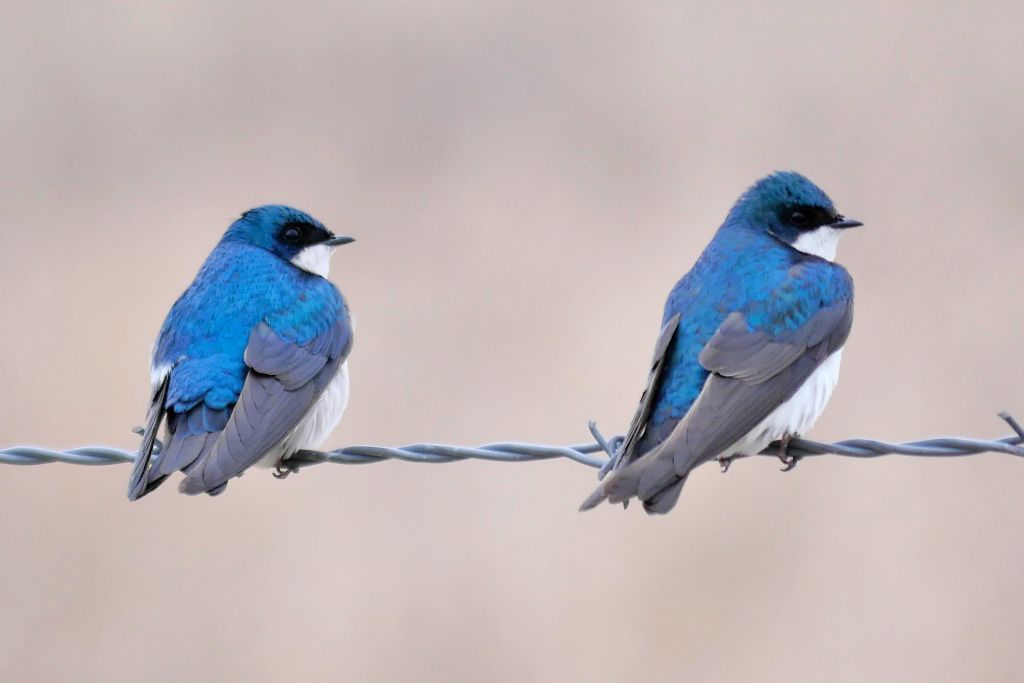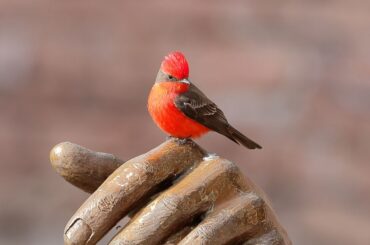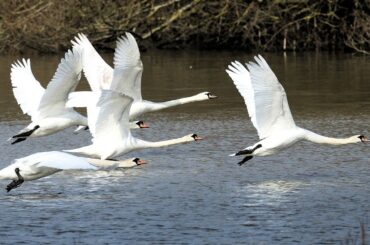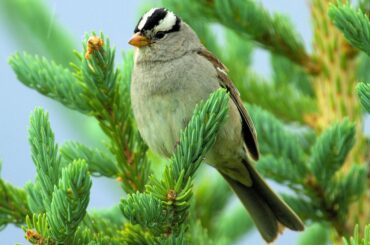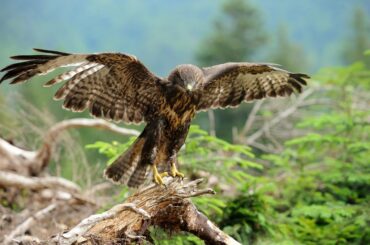Are you curious about the fascinating avian residents of Michigan? It’s a real treat for those who want to watch birds in their native settings.
Over 400 common bird species live in Michigan’s lovely state. These lovely species thrive in Michigan’s lush forests, meadows, and Great Lakes beaches. Learn about these birds, their unique characteristics, and where to find them in nature.
What Do Common Birds Look Like in Michigan?
Michigan is home to diverse common birds that grace its forests, fields, and backyards. These birds are easy to identify and entertaining to watch.
In terms of size, common birds in Michigan come in various shapes and proportions. Some are petite and compact, while others boast a more substantial and robust physique. These differences in size allow them to adapt and thrive in different habitats across the state.
Regarding color, common birds in Michigan exhibit a vibrant spectrum that can captivate the eye. Their feathers have stunning red, yellow, brown, and gray patterns. They attract mates and camouflage in their native environment with these hues.
These Michigan birds can be found in different locations throughout the state. Forests and woodlands offer a sanctuary for many species, providing ample cover and abundant food sources. Others fly across fields and meadows to seek insects or make nests in adjacent trees.
1. Black-Capped Chickadee
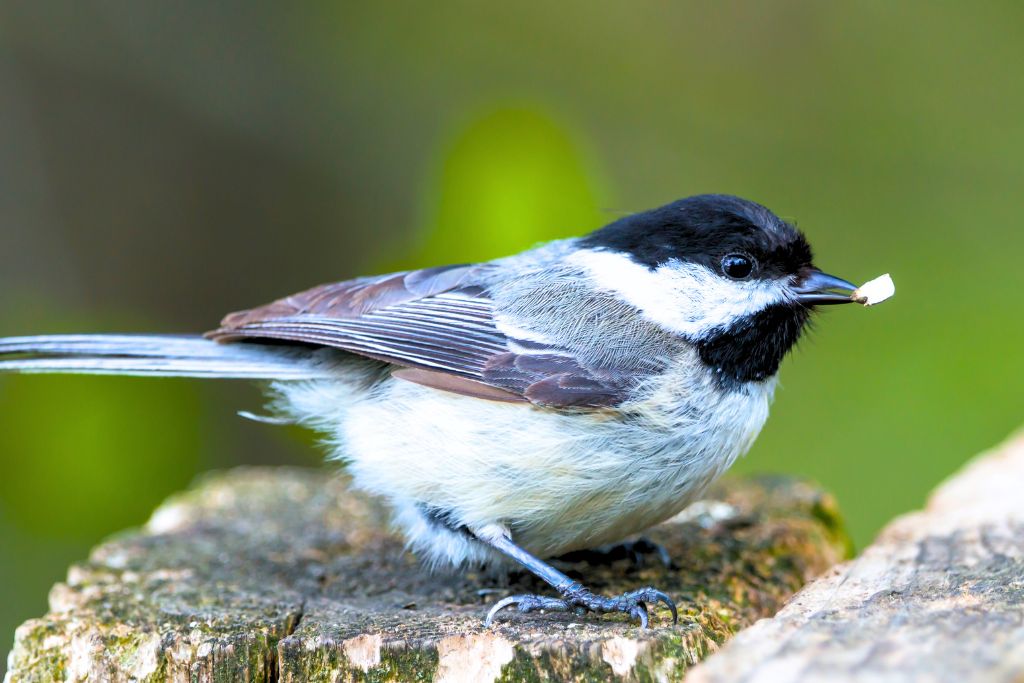
- Kingdom: Animalia
- Phylum: Chordata
- Class: Aves
- Order: Passeriformes
- Genus: Poecile
- Species: P. atricapillus
The black-capped chickadee (Poecile atricapillus) is a small, energetic bird commonly found throughout Michigan. Known for its distinctive black cap and bib, it has a grayish-white underside and a short, stubby beak.
These birds are well-suited to their environment and have a few interesting adaptations. Their small size and lightweight build allow them to navigate through branches and foliage easily.
They hang upside down from twigs and branches to obtain insects and seeds. These birds can also remember thousands of food-hiding sites.
During the breeding season, black-capped chickadees construct their nests in tree cavities or birdhouses. They line the nest with soft materials such as moss, fur, and feathers. The female lays around 6 to 8 eggs, and both parents take turns incubating them. Once the eggs hatch, the parents feed the chicks a diet of insects and seeds.
The average lifespan of a black-capped chickadee is only 2 to 3 years. Some individuals have been known to live up to 12 years.
In Michigan, these birds can be spotted in various habitats, including forests, parks, and backyards. Michigan’s avian chorus includes their cheery “chickadee-dee-dee” sounds.
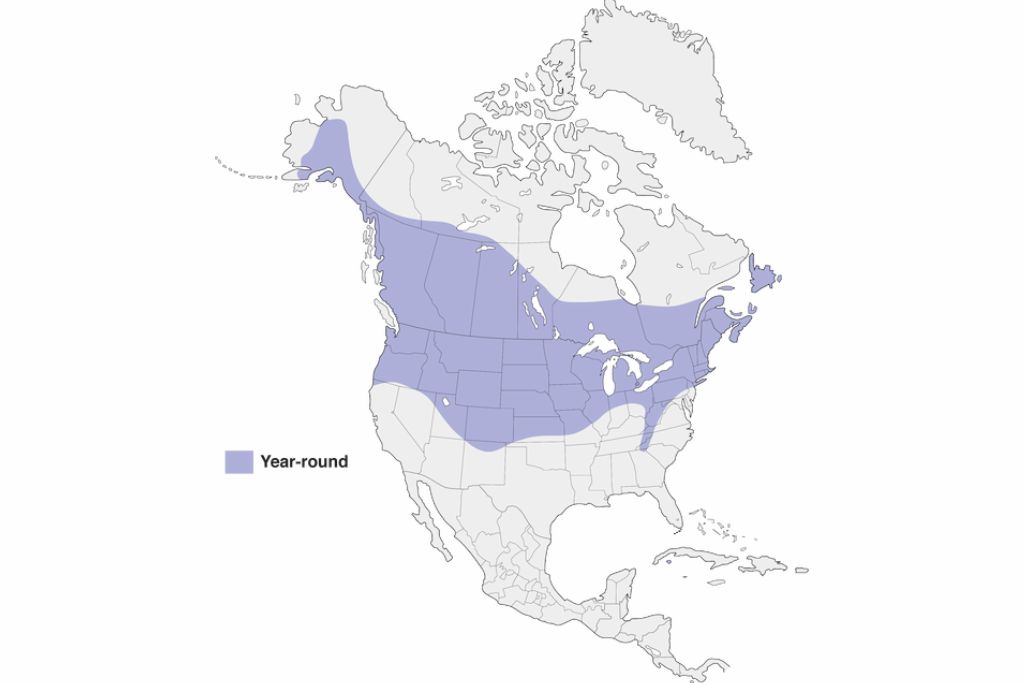
2. American Robin
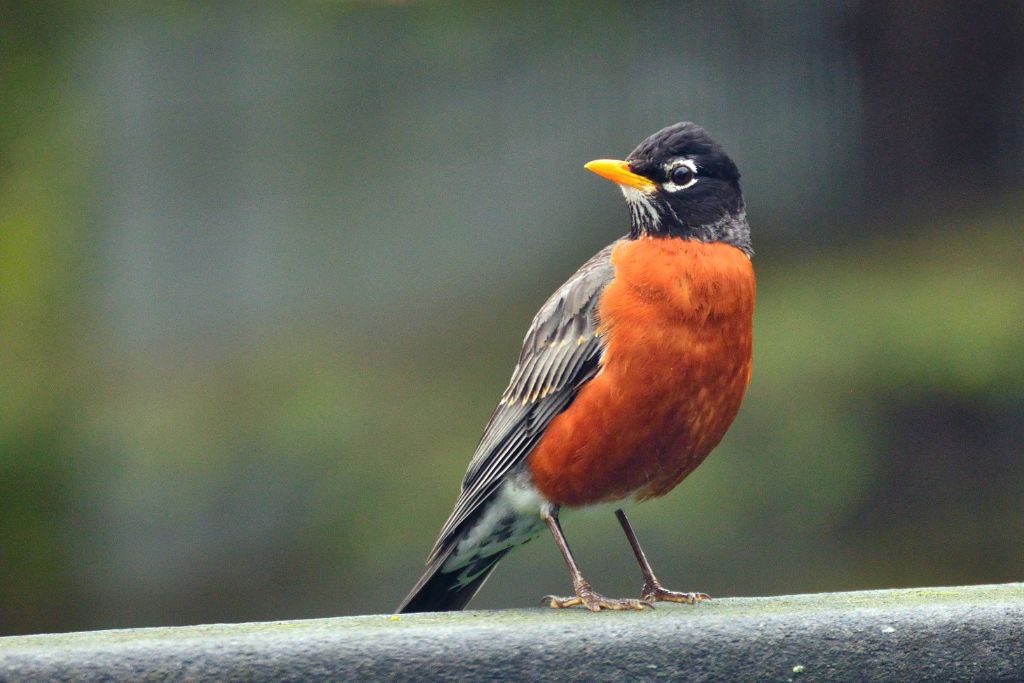
- Kingdom: Animalia
- Phylum: Chordata
- Class: Aves
- Order: Passeriformes
- Genus: Turdus
- Species: T. migratorius
The American robin (Turdus migratorius) is a familiar bird that frequents Michigan’s urban and rural areas. It is known for its vibrant orange-red breast, dark gray back, and white eye ring. These medium-sized birds have a distinctive song often associated with spring’s arrival.
Robins have a varied diet, feeding on earthworms, insects, fruits, and berries. Their unique adaptation includes the ability to tilt their heads sideways to locate prey on the ground.
The nests of the American robin are cup-shaped and made of twigs, grass, and mud. They often nest in trees or ledges, including those found on buildings. The female lays around 3 to 5 eggs, which she incubates while the male provides food. After hatching, both parents care for the chicks until they fledge.
American robins typically have a life expectancy of about 2 to 3 years. These birds can be found in open places with grassy lawns and near bodies of water in Michigan, where they can feed and nest.
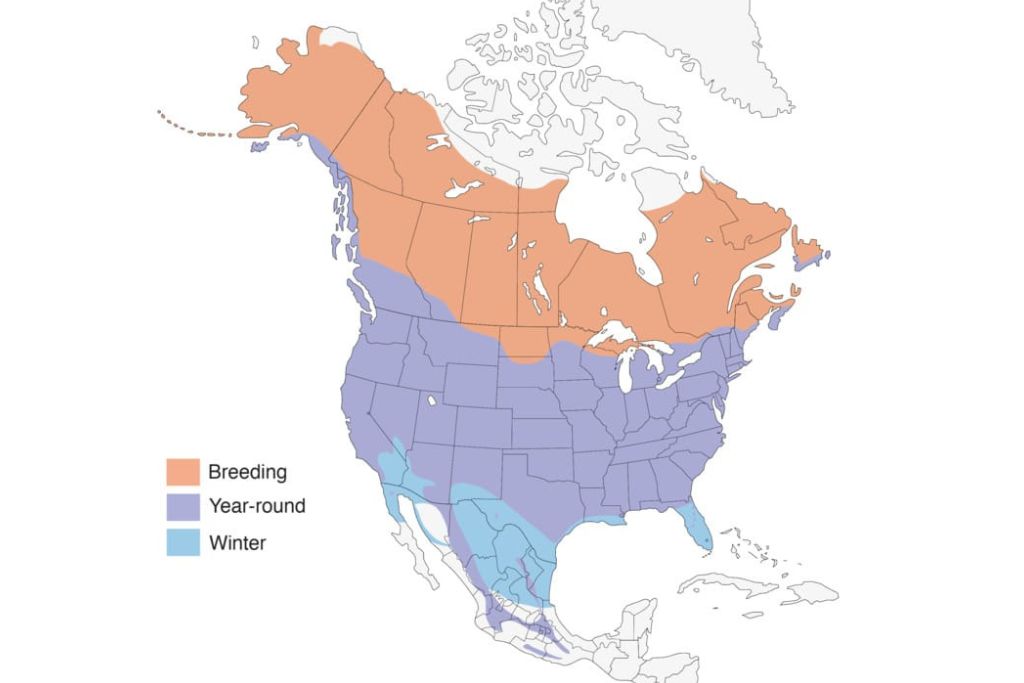
3. Tree Swallow
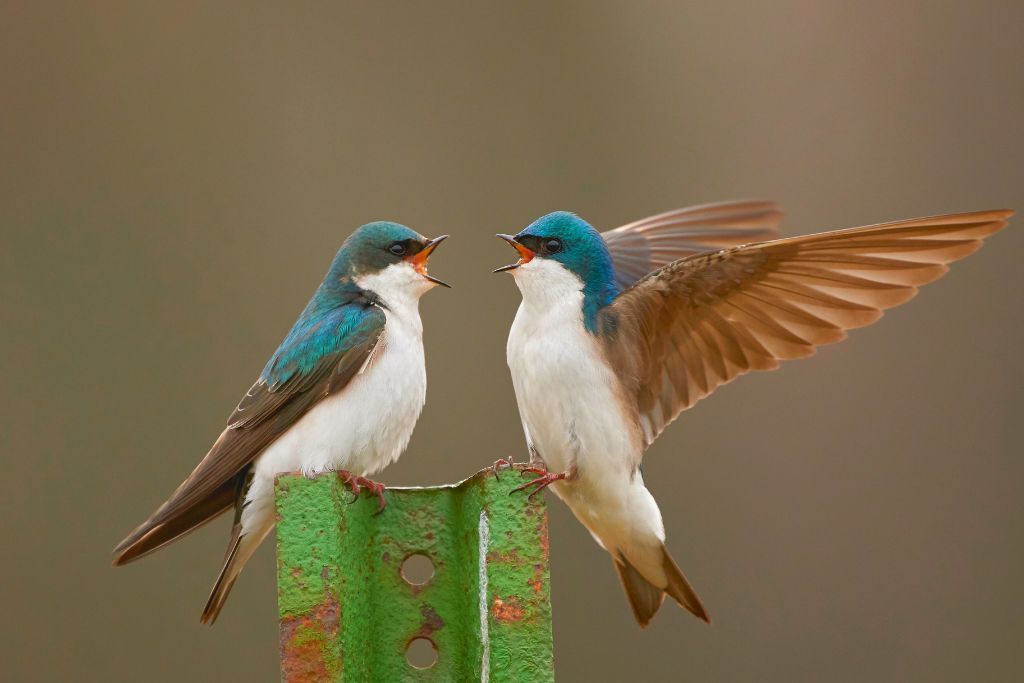
- Kingdom: Animalia
- Phylum: Chordata
- Class: Aves
- Order: Passeriformes
- Genus: Tachycineta
- Species: T. bicolor
The tree swallow (Tachycineta bicolor) is a graceful aerial acrobat throughout Michigan. These little birds are gorgeous in flight with their iridescent blue-green backs and white undersides. They are highly skilled at maneuvering through the air, often darting and twisting to catch flying insects.
Tree swallows are typically found near wetland areas, like marshes, ponds, and lakeshores. Their forked tail helps them shift direction fast in flying. These birds feed on insects, including mosquitoes, flies, and beetles.
When it comes to nesting and breeding, tree swallows prefer to nest in tree cavities or artificial birdhouses. They construct nests using grasses, feathers, and other soft materials. The female lays a clutch of 4 to 7 eggs, which she incubates while the male provides food. The young are cared for by both parents from when they hatch until they are ready to fly.
These birds have a relatively short life expectancy of about 4 to 6 years. These birds are best seen in Michigan’s vast fields and marshes with many flying insects.
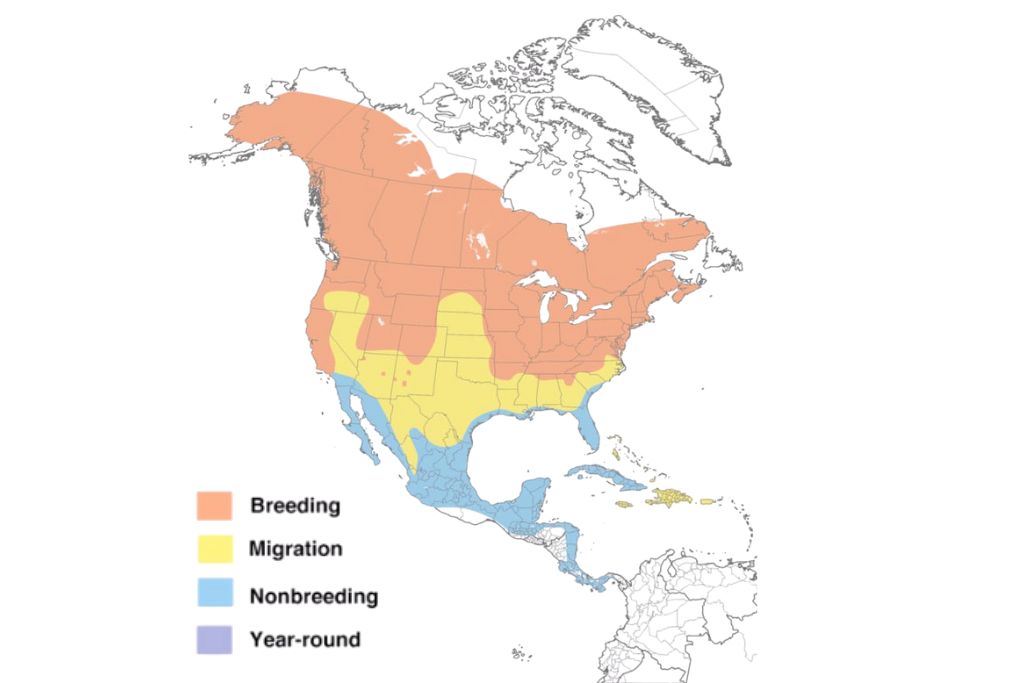
4. Blue-Gray Gnatcatcher
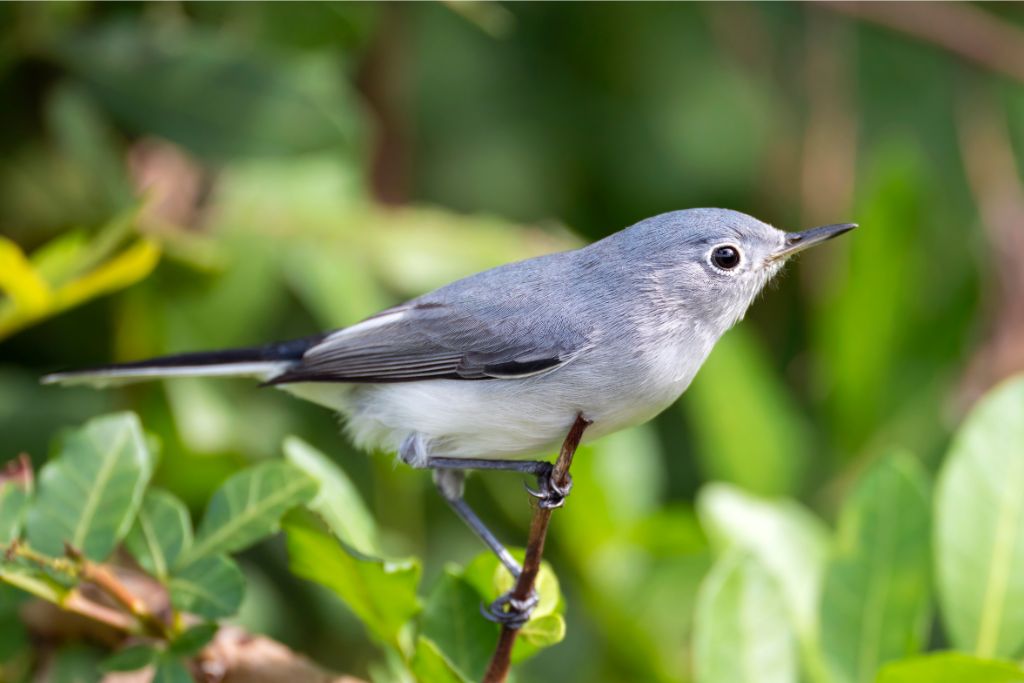
- Kingdom: Animalia
- Phylum: Chordata
- Class: Aves
- Order: Passeriformes
- Genus: Polioptila
- Species: P. caerulea
The blue-gray gnatcatcher (Polioptila caerulea is a tiny songbird found in Michigan’s woodlands and forests. Despite its small size, this bird is active and has distinctive bluish-gray plumage, a long tail, and a white eye ring. It gets its name from its habit of catching and consuming small insects, including gnats.
Blue-gray gnatcatchers prefer wooded habitats, especially areas with dense foliage and shrubs. They use their long tails to balance and maneuver among branches to search for insects. These birds can find and catch prey while hovering or hanging upside down from twigs.
They create cup-shaped nests of plant fibers, spider silk, and lichens for breeding. These nests are typically well-hidden and placed in the forks of tree branches. The female lays a clutch of 4 to 6 eggs, which she incubates while the male feeds her. Both parents care for the chicks once they hatch.
The average lifespan of Blue-gray Gnatcatcher is only 2 to 3 years. To find insects, these birds live in Michigan’s forests, woodlands, and dense vegetation.
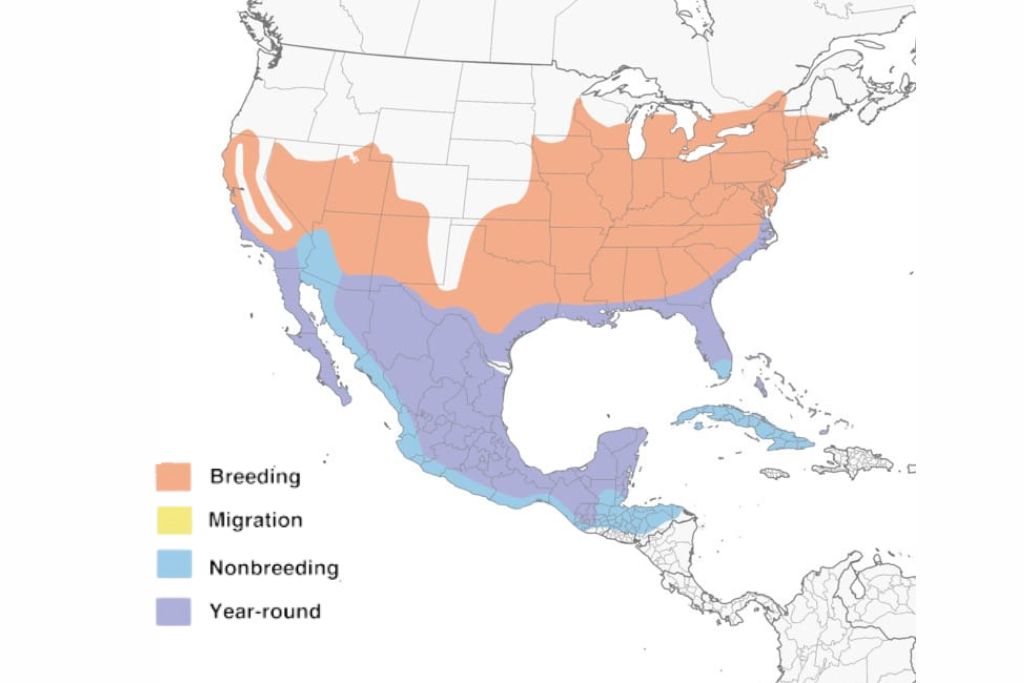
5. Red-Bellied Woodpecker
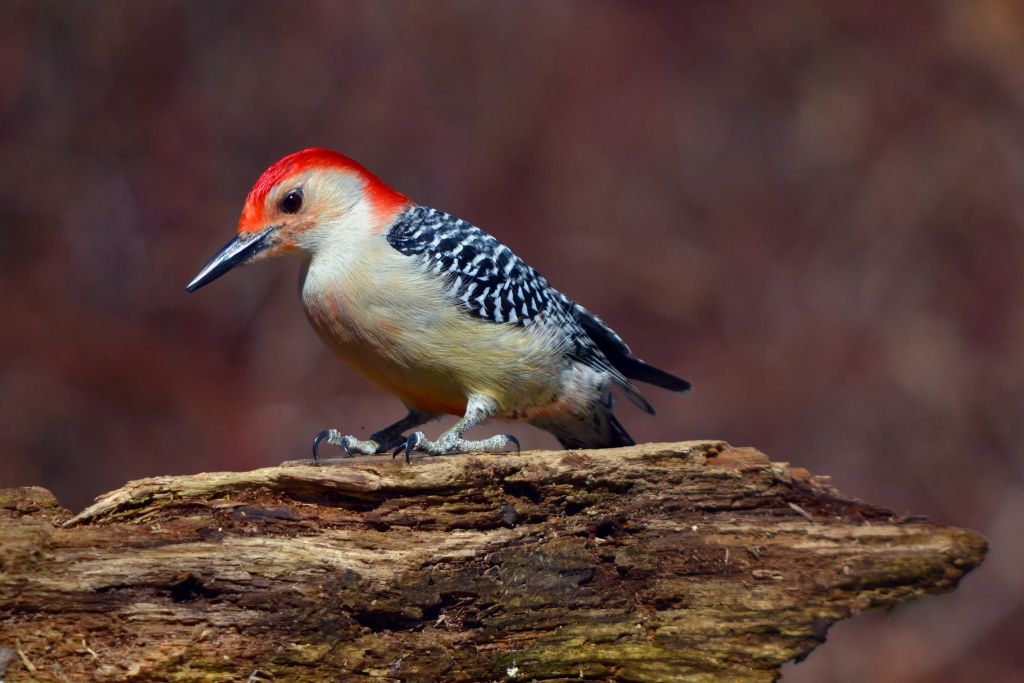
- Kingdom: Animalia
- Phylum: Chordata
- Class: Aves
- Order: Piciformes
- Genus: Melanerpes
- Species: M. carolinus
The red-bellied woodpecker (Melanerpes carolinus) is a striking bird found in Michigan’s woodlands and suburban areas. Despite its name, its red belly is often hidden, and its most prominent feature is its vibrant red cap. The back and wings are a mix of black and white, and the underparts are pale with a tinge of red.
Red-bellied woodpeckers have adapted well to various habitats, including deciduous forests, wooded suburbs, and parks. They excavate tree trunks for beetles and ants with their solid and chisel-like beaks. They also eat fruits, nuts, and seeds.
Regarding nesting and breeding behaviors, red-bellied woodpeckers carve out nest cavities in dead or dying trees. They line the cavities with wood chips, creating a comfortable environment for their eggs. The female lays a clutch of 3 to 8 eggs, and both parents take turns incubating them. The parents will continue to feed their young until they are ready to fly.
They have a relatively long life expectancy of about 10 to 15 years. These birds may nest and eat in Michigan’s mature forests, woodlands, and suburbs.
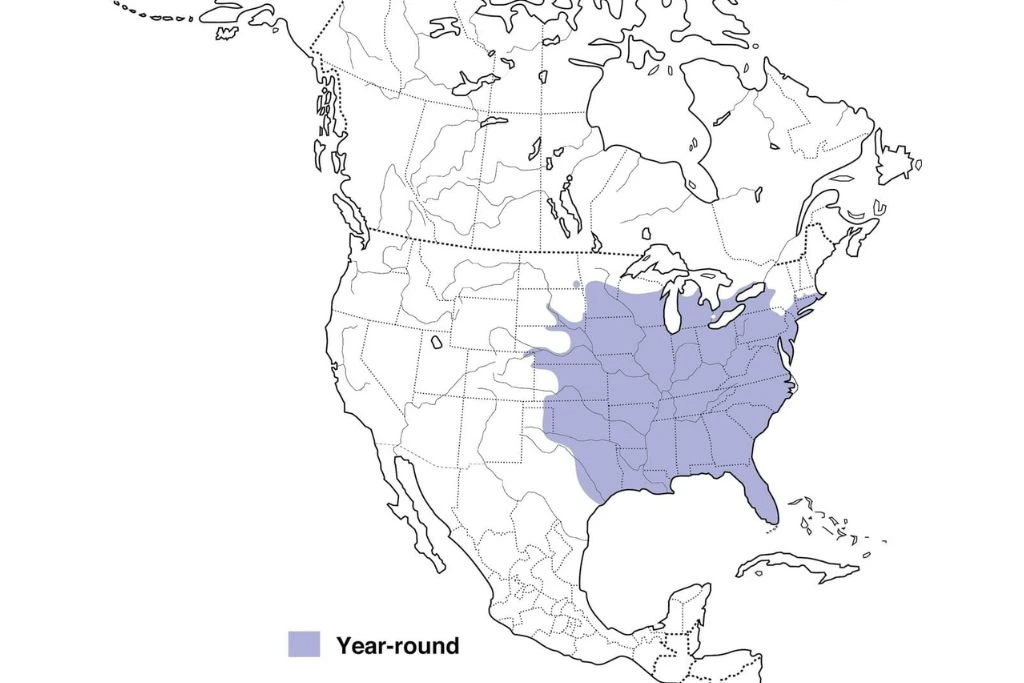
6. Downy Woodpecker
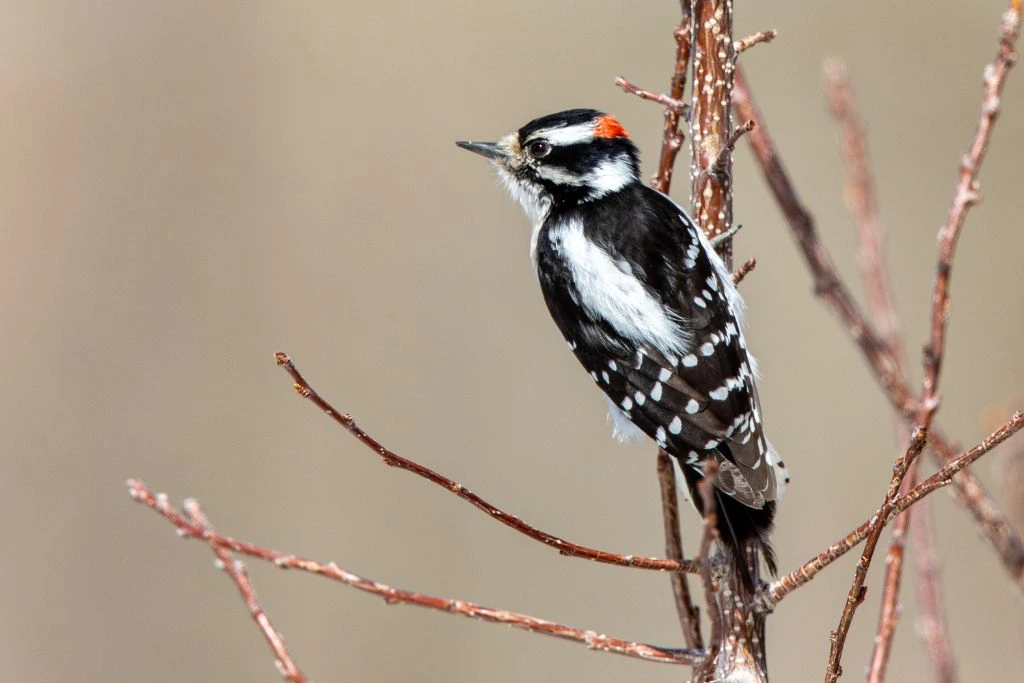
- Kingdom: Animalia
- Phylum: Chordata
- Class: Aves
- Order: Piciformes
- Genus: Dryobates
- Species: D. pubescens
The downy woodpecker (Dryobates pubescens) is a common Michigan bird with unique traits and activities. One of North America’s tiniest woodpeckers, it measures 6 to 7 inches. It features a black head, black wings with white markings, and a white belly and back. The male can be identified by a small red patch on the back of its head.
The powerful, chisel-like beak of the downy woodpecker allows it to dig food from trees. Its strong tail feathers help it climb tree trunks and branches effortlessly. If there are trees, this woodpecker is found in woods, woodlands, parks, and even suburbs.
During the spring breeding season, the downy woodpecker builds a nest high up in a tree. The female lays a clutch of 3 to 8 white eggs, which both parents take turns incubating for about 12 days. Once the eggs hatch, the parents feed the chicks a diet of insects and larvae. They have a high survival rate and can live up to 12 years in the wild.
They are found across Michigan, from the Upper Peninsula’s deep forests to Detroit’s urban parks. For both food and shelter, they look for areas with a mixture of deciduous and coniferous trees. These busy, pounding birds are easy to spot among the treetops.
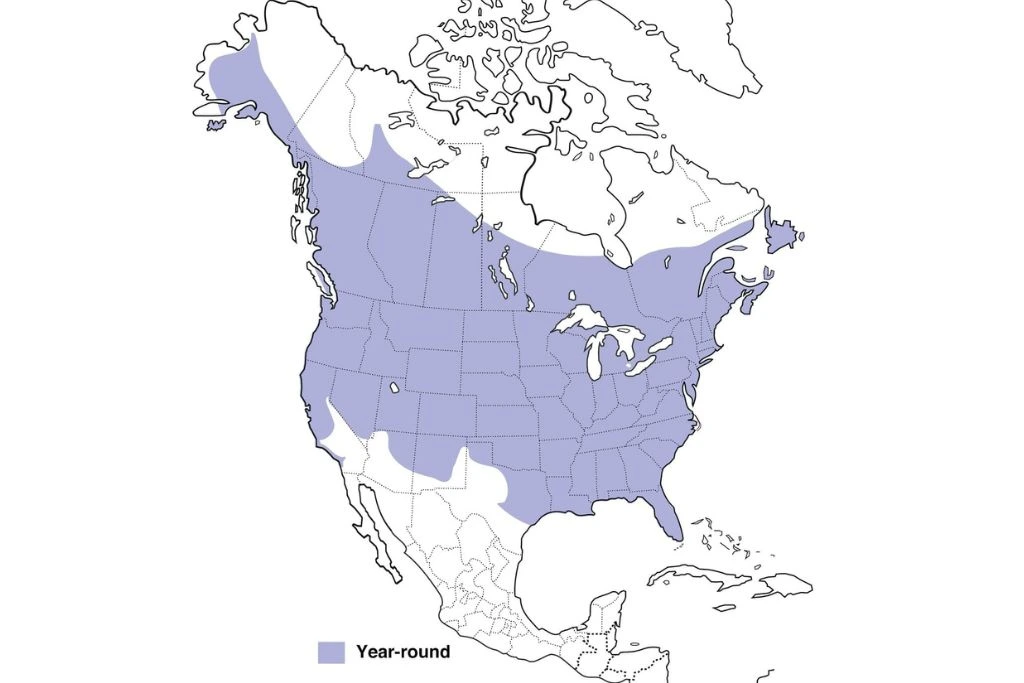
7. Northern Cardinal
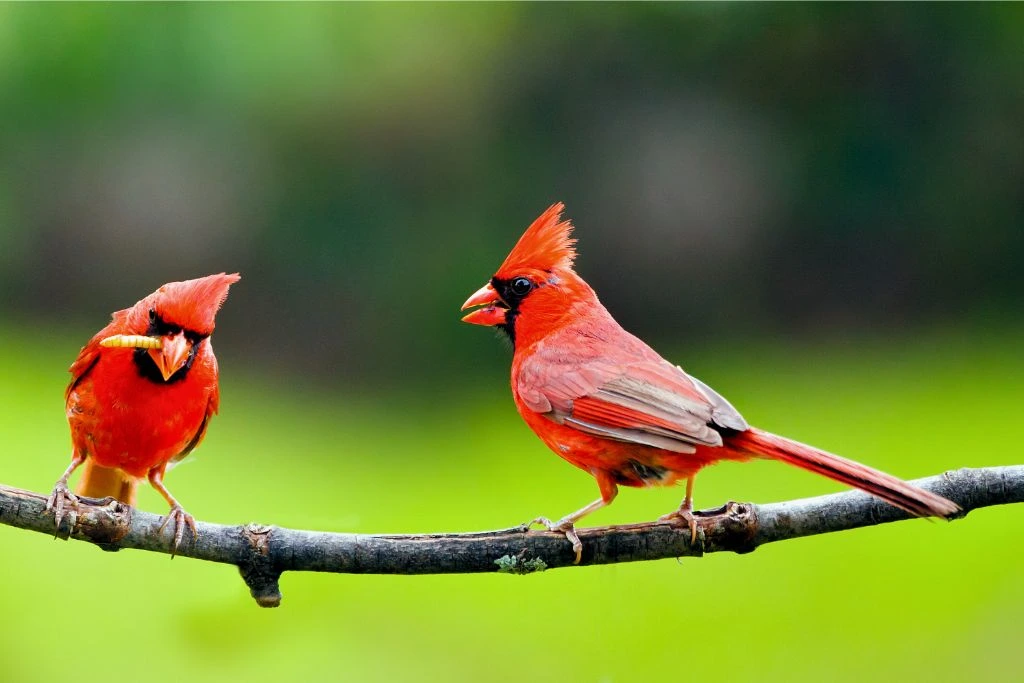
- Kingdom: Animalia
- Phylum: Chordata
- Class: Aves
- Order: Passeriformes
- Genus: Cardinalis
- Species: C. cardinalis
The northern cardinal (Cardinalis cardinalis) is a beautiful and vibrant bird that is a common sight in Michigan. The male northern cardinal is distinguished by its vivid red plumage, crest, and black mask. The female displays a more subtle combination of light brown and reddish tones. These birds are easily recognizable and often found in rural and urban areas across the state.
Northern cardinals are well adapted to various habitats, including forests, woodlands, gardens, and parks. They like thick vegetation for nesting and have a powerful beak for cracking seeds. The males sing to establish their territory and attract mates.
When it comes to nesting and breeding, northern cardinals are monogamous birds. The female shapes and lines the nest with soft materials, while the male gathers twigs, leaves, and grass.
Each parent takes turns incubating a clutch of 2 to 5 eggs for about 2 weeks after the female lays them. After hatching, the parents continue working together to feed and care for the chicks until they fumble.
The average lifespan of a northern cardinal is around 3 years in the wild. Some individuals have been known to live up to 15 years.
In Michigan, these vibrant birds can be found throughout the state, from the northern forests to the southern urban areas. Their beautiful red plumage and charming vocals add brightness and music to Michigan.
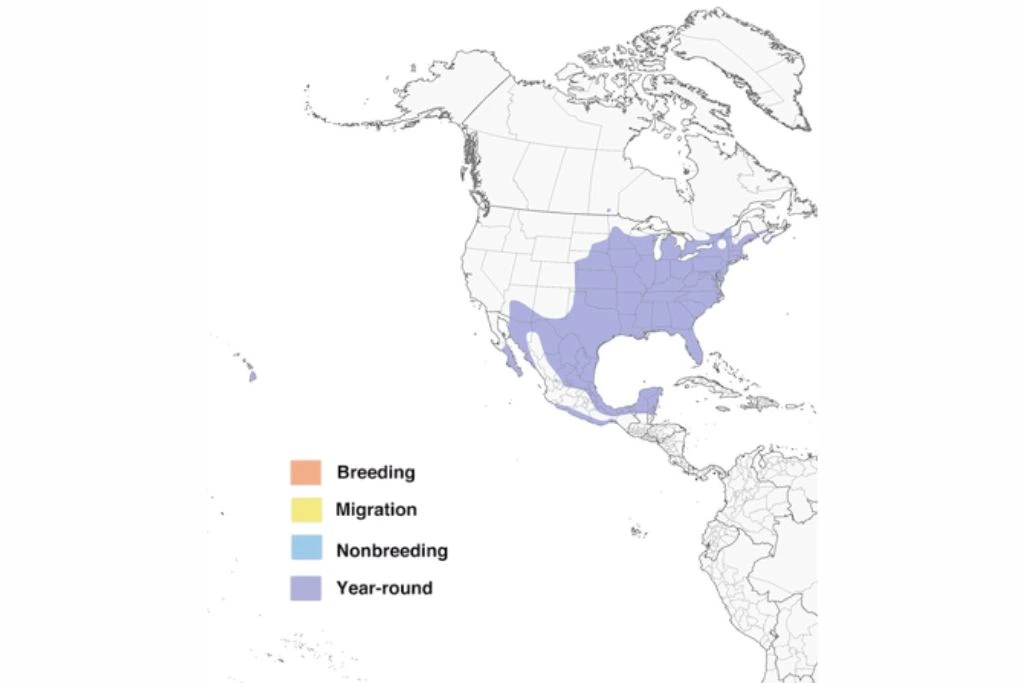
8. Baltimore Oriole
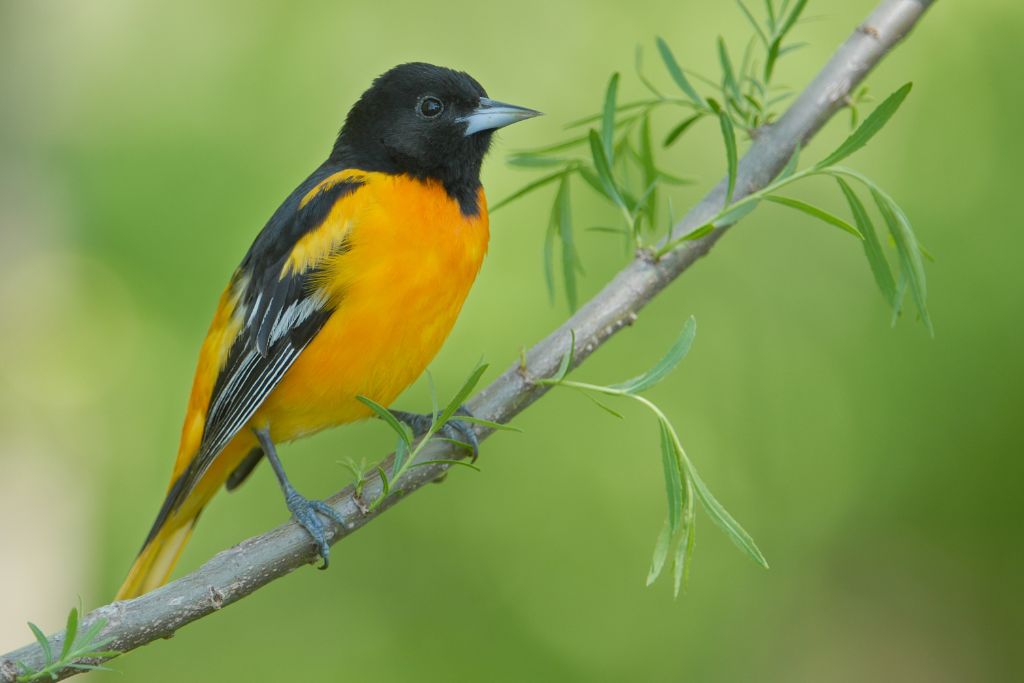
- Kingdom: Animalia
- Phylum: Chordata
- Class: Aves
- Order: Passeriformes
- Genus: Icterus
- Species: I. galbula
The Baltimore oriole (Icterus galbula) is a strikingly colorful bird that migrates to Michigan during summer. The male is known for its vibrant orange plumage, contrasting with black wings and a black head. The female displays a more muted combination of yellow and brown tones. These birds make beautiful hanging nests that decorate their trees.
Baltimore orioles prefer open woodlands, forest edges, and areas with scattered trees. They prefer deciduous trees like maples and elms for food. Their short, pointed beaks help them efficiently explore flowers for nectar and fruits for insects.
Male Baltimore orioles create territory and elaborate wooing displays to attract females during the breeding season. Once a pair is formed, the female builds a pendulous nest, typically located at the tip of a branch. The female lays 3 to 7 eggs in a nest of plant fibers, hair, and other things. Both parents take turns incubating the eggs for about two weeks.
They typically live 8 years, although some survive 12 years. These unusual birds are often spotted in Southern Michigan, especially along Lake Erie and Lake Michigan. Look for their vibrant plumage and enjoy their rich, flute-like songs as they brighten the Michigan summer.
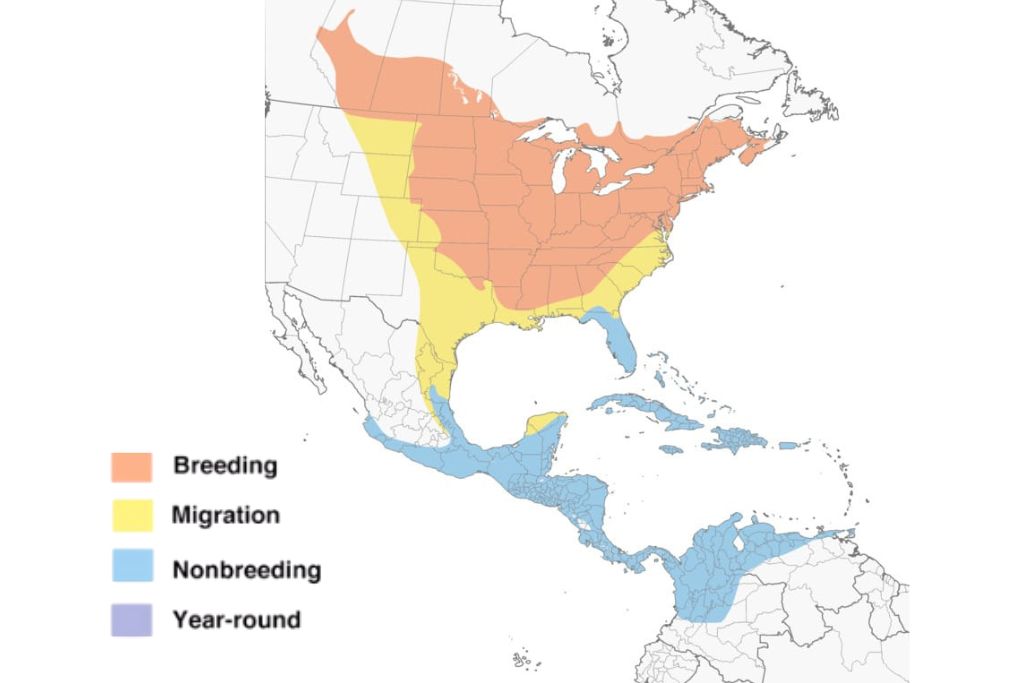
9. Gray Catbird
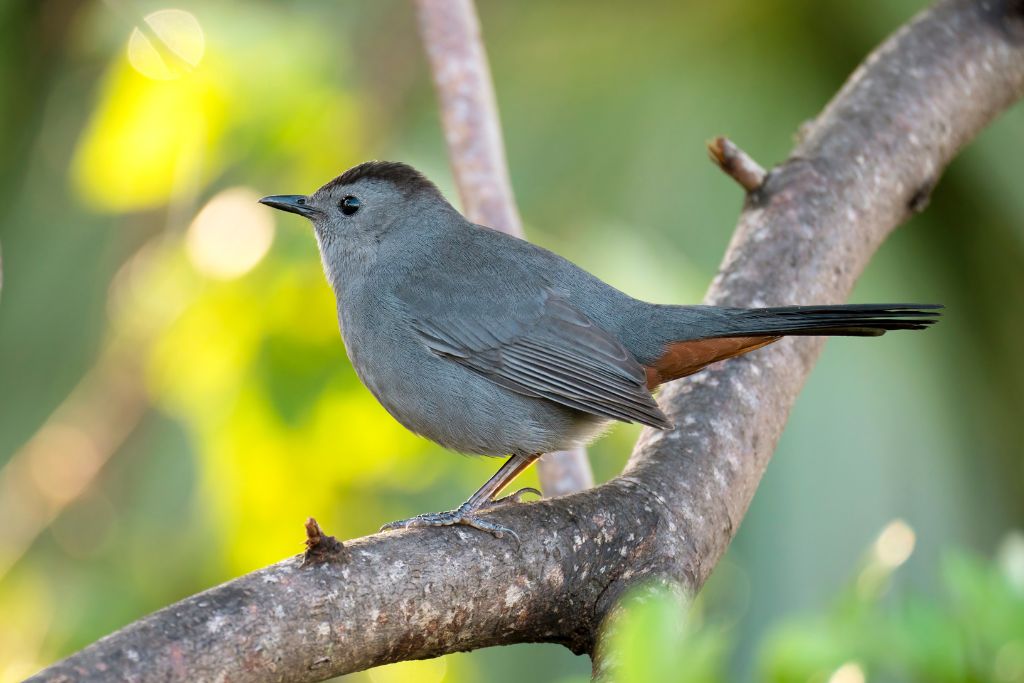
- Kingdom: Animalia
- Phylum: Chordata
- Class: Aves
- Order: Passeriformes
- Genus: Dumetella
- Species: D. carolinensis
The gray catbird (Dumetella carolinensis) is a medium-sized bird known for its cat-like mewing calls and stealthy nature. Despite its name, this bird’s plumage is predominantly gray, with a black cap and a rusty undertail.
These adaptive birds live in forests, thickets, and suburban gardens. Gray catbirds’ unusual actions and vocalizations make them an intriguing addition to Michigan’s bird population. They are skilled at mimicking the sounds of other birds and can often be heard imitating the calls of other species. This behavior is believed to help them establish their territory and attract mates.
Nests made by the gray catbird are cup-shaped and concealed in dense shrubs or low tree limbs. The female lays a clutch of 2 to 5 eggs, which both parents take turns incubating for about 2 weeks. After the eggs hatch, the parents feed the chicks a diet of insects, berries, and fruits.
Some gray catbirds live up to 10 years, while the typical lifespan is 3. These secretive birds are distributed across Michigan but are more prevalent in the South. Watch for their “mewing” cries and delicate gray plumage as they move through the foliage.
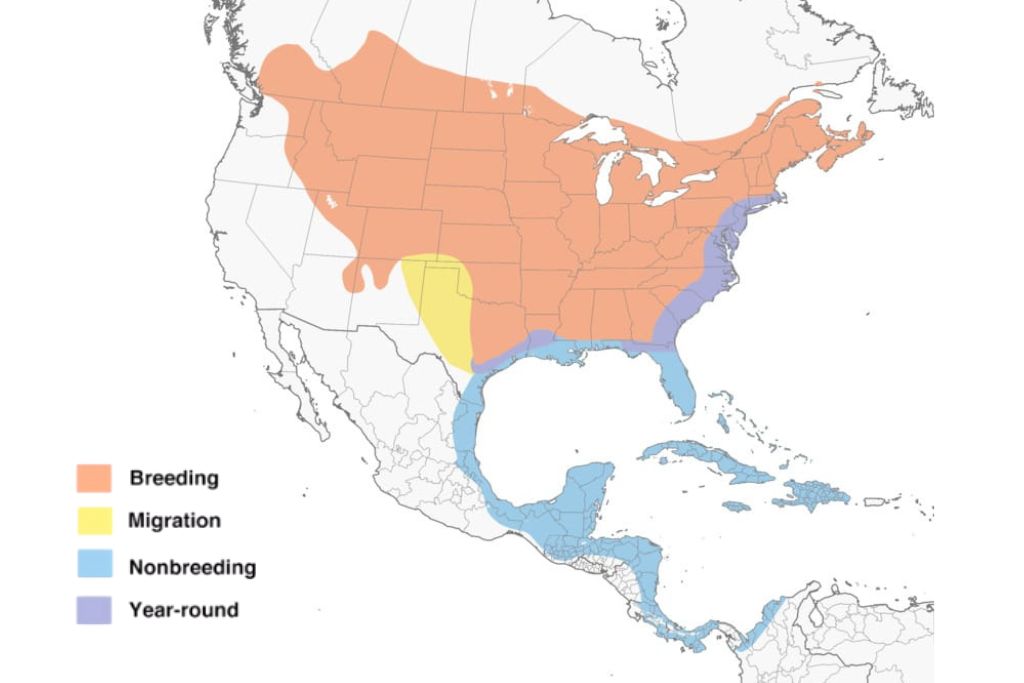
10. Eurasian Collared-Dove
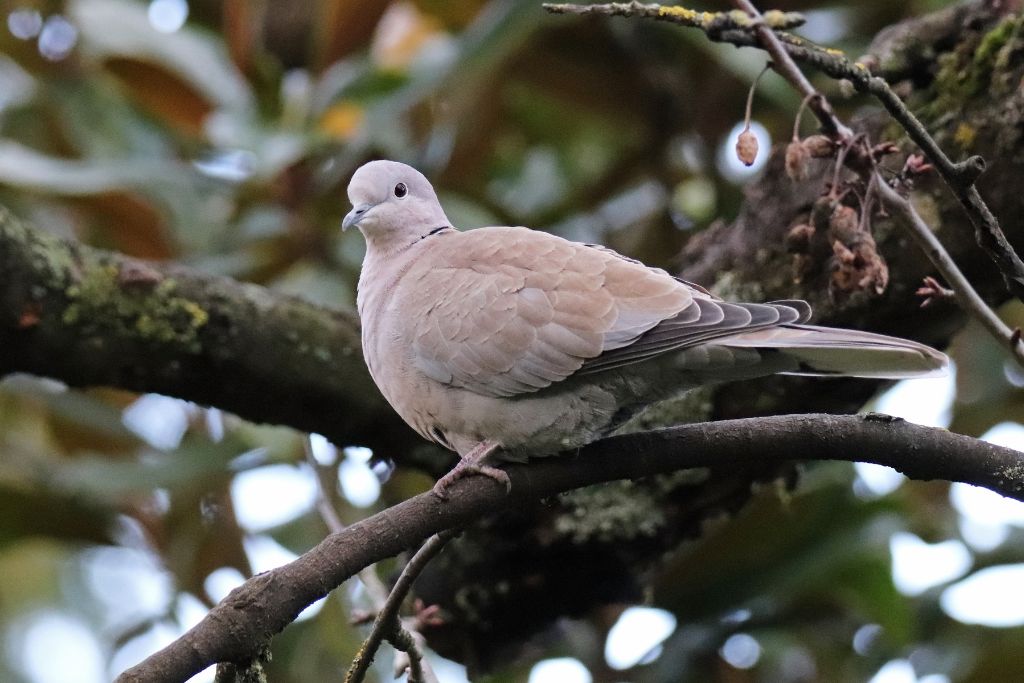
- Kingdom: Animalia
- Phylum: Chordata
- Class: Aves
- Order: Columbiformes
- Genus: Streptopelia
- Species: S. decaocto
The Eurasian collared-dove (Streptopelia decaocto) is a non-native bird spread across Michigan and North America. These plump grayish-brown doves have a black crescent-shaped collar on the back of their necks. They are larger than native mourning doves and live in urban and suburban regions where they have adapted successfully.
Originally from Europe and Asia, Eurasian collared-doves were introduced to the Bahamas in the 1970s. Due to their capacity to breed rapidly and to adapt to many habitats, they expanded across North America, including Michigan. These doves are often perched on wires, rooftops, and trees, emitting soft, repetitive cooing sounds.
Eurasian collared-doves live in residential areas, parks, and farms. They feed on seeds, grains, and fruits and can often be seen foraging on the ground or visiting backyard bird feeders. These doves are known for their relatively tame behavior, often allowing humans to approach them closely.
The average lifespan of these birds is around 4 to 5 years. In Michigan, they are most commonly spotted in the southern regions, including Detroit and the surrounding areas. Many Michigan communities recognize their distinctive collars and gentle cooing.
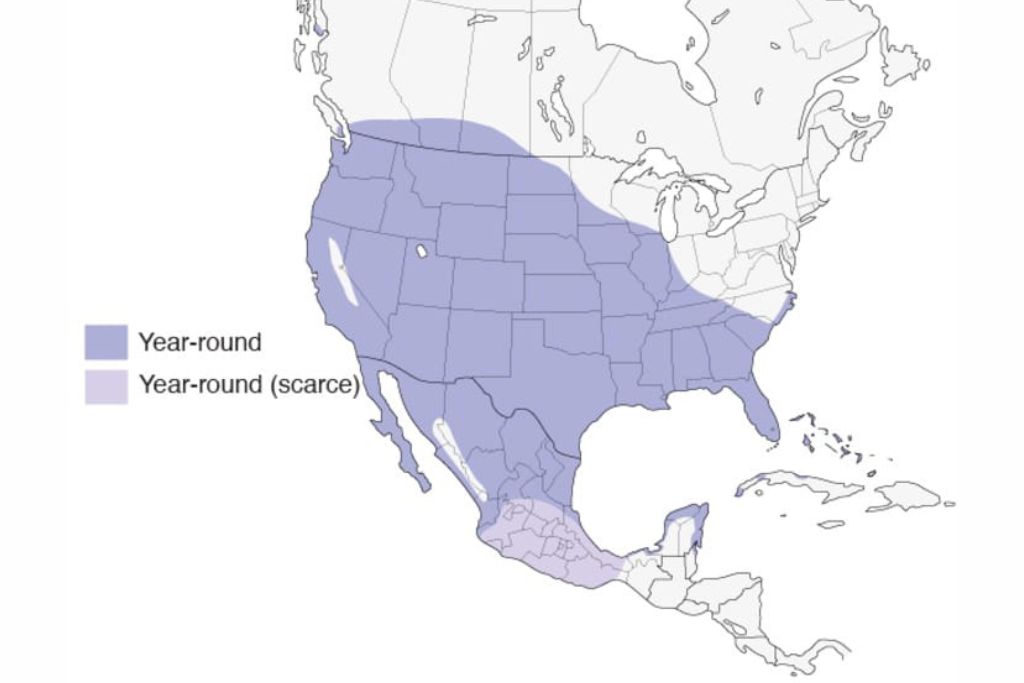
11. American Bittern
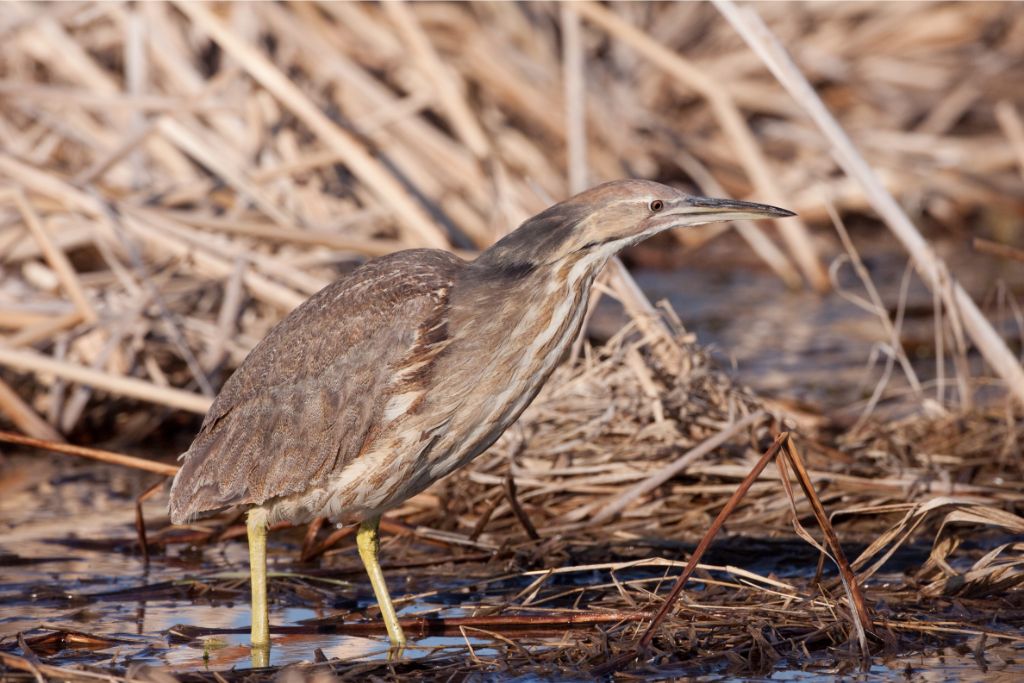
- Kingdom: Animalia
- Phylum: Chordata
- Class: Aves
- Order: Pelecaniformes
- Genus: Botaurus
- Species: B. lentiginosus
The American bittern (Botaurus lentiginosus) is a fascinating bird found in the beautiful state of Michigan. This medium-sized heron-like bird possesses unique characteristics that make it stand out in the avian world. The long, pointed bill and mottled brown plumage of the American bittern help it disappear into its wetland habitat.
Adapted to their environment, they possess several remarkable features. It can elongate its neck and point its bill upward, imitating the surrounding vegetation. This “stalking pose” makes the bird practically inconspicuous to prey and predators. Its striped plumage conceals it, and its wide eyes help it hunt.
When it comes to nesting and breeding behaviors, they prefer secluded wetlands with dense vegetation. The female bittern constructs a nest on the ground, weaving grasses and other plant material together. The male is known for his unique booming call, which sounds like a resounding “long-ka-chunk.”
The elusiveness of the American bittern and its ability to fit in with its surroundings is remarkable. This bird lives about 7 years in the wild, but some live longer.
The Lower Peninsula and Great Lakes wetlands of Michigan are frequent habitats for American bitterns. During your Michigan nature walks, look for these elusive and intriguing birds!
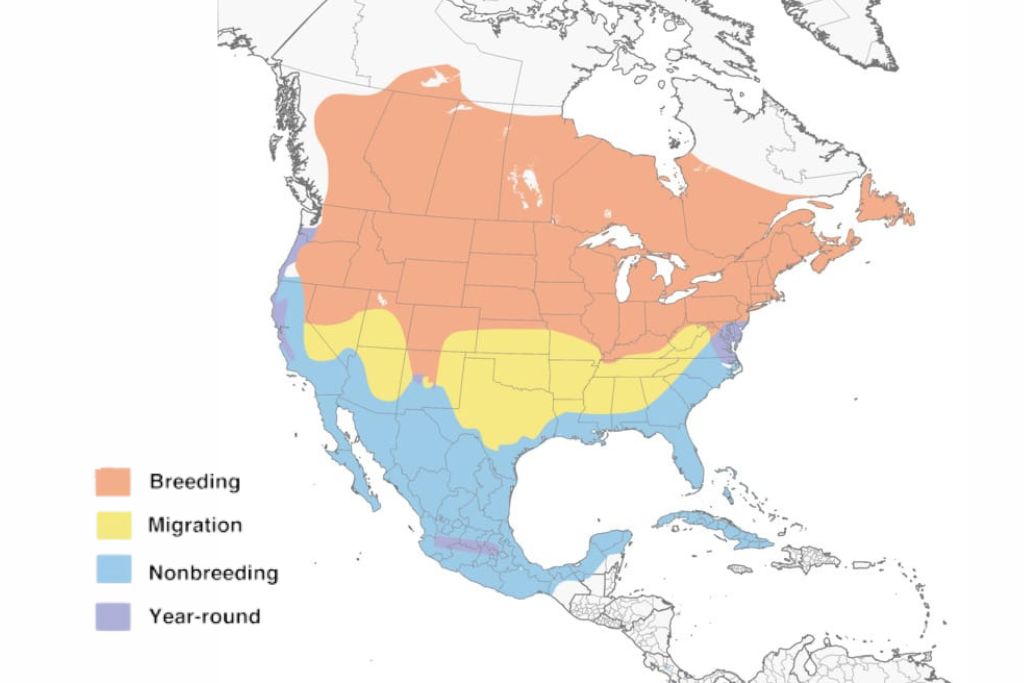
12. Warbling Vireo
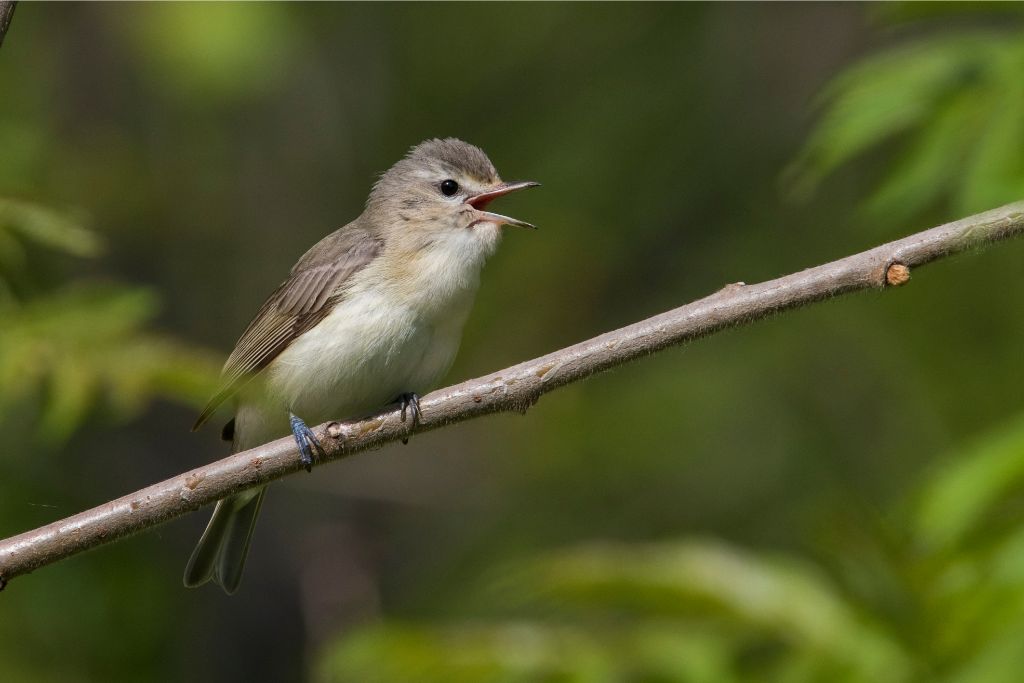
- Kingdom: Animalia
- Phylum: Chordata
- Class: Aves
- Order: Passeriformes
- Genus: Vireo
- Species: V. gilvus
The warbling vireo (Vireo gilvus) is a charming songbird that can be observed in Michigan’s diverse landscapes. This little bird stands out with its charming songs, olive-green plumage, white underparts, and slender bill. Its name, “vireo” comes from the Latin word meaning “green,” which perfectly describes its vibrant appearance.
They live in forests, woodlands, and even urban parks around Michigan. It prefers deciduous trees where it can build its nest and forage for insects. The vireo’s slender bill allows it to extract small insects from leaves and twigs, making it well-suited for its diet.
Warbling vireos build exquisite cup-shaped nests in tree branches. The female bird weaves grasses, spider silk, and plant fibers into a robust and comfy nest for her eggs. Once the chicks hatch, both parents feed and care for the young.
An interesting fact about the Warbling Vireo is its repetitive and melodic song, which has a warbling quality. It is often described as sounding like a happy, rolling phrase that can go on for several minutes. These beautiful songs give a lovely backdrop to Michigan’s woodlands in summer.
With an average lifespan of 5 years, the warbling vireo sings in Michigan’s parks, forests, and green spaces.
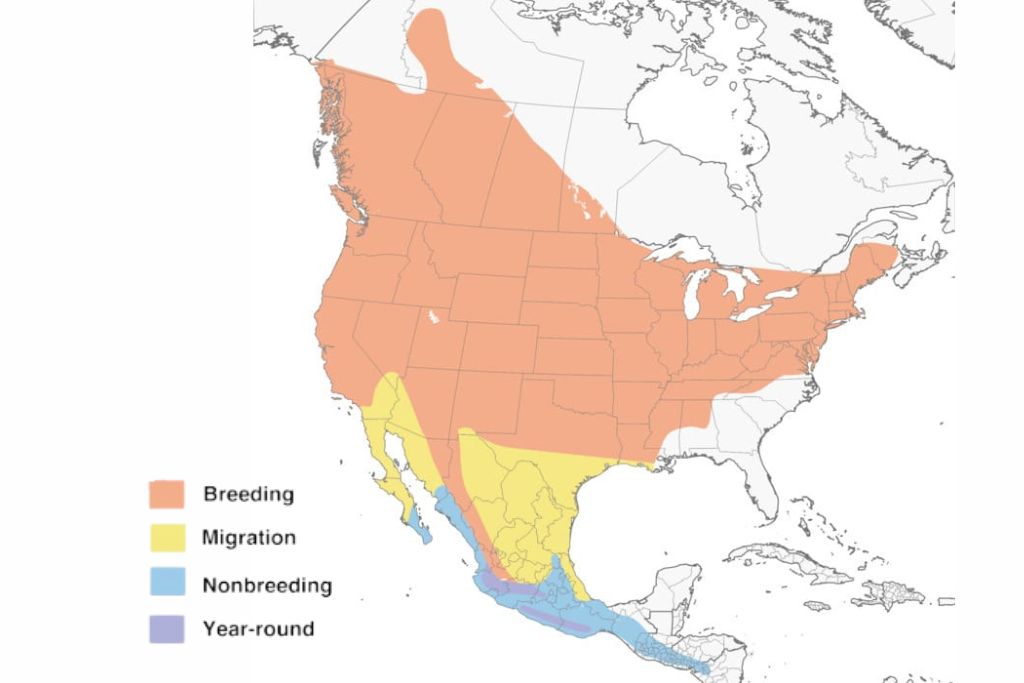
13. Hairy Woodpecker
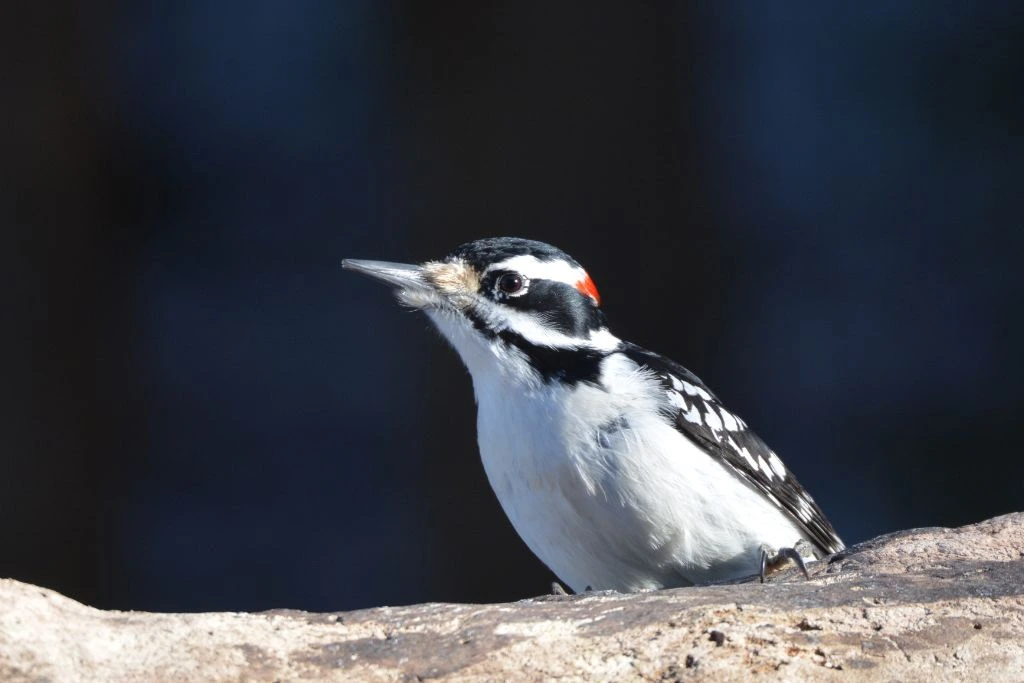
- Kingdom: Animalia
- Phylum: Chordata
- Class: Aves
- Order: Piciformes
- Genus: Leuconotopicus
- Species: L. villosus
Michigan’s forests and woodlands are home to the charismatic black-and-white hairy woodpecker (Leuconotopicus villosus). With its chisel-like bill, this robust woodpecker can excavate trees for food and nesting chambers.
The hairy woodpecker, larger than the downy woodpecker, has black wings, white undersides, and a huge head. One distinguishing feature is its long, sturdy bill, which helps it forage for insects hidden beneath the bark of trees. They also have stiff tail feathers that act as support when climbing tree trunks.
The adaptable hairy woodpecker lives in forests, woodlots, and suburban settings with mature trees. It often drums on tree trunks to communicate with other woodpeckers and establish territory. This woodpecker pulls insects, larvae, and wood-boring beetles from trees with its bill.
Nesting and breeding behaviors of the hairy woodpecker involve excavating a cavity in a dead or decaying tree. The female lays 4 to 6 eggs, which both parents take turns incubating. Once the chicks hatch, both parents actively feed them a diet of insects and regurgitated food.
By drumming on metal gutters or hollow trees, the hairy woodpecker can produce loud, distinctive sounds. These drumming sounds are territorial calls that can be heard from a distance.
In Michigan’s woodlands, the hairy woodpecker climbs tree trunks and taps for food. It lives 5 to 6 years.
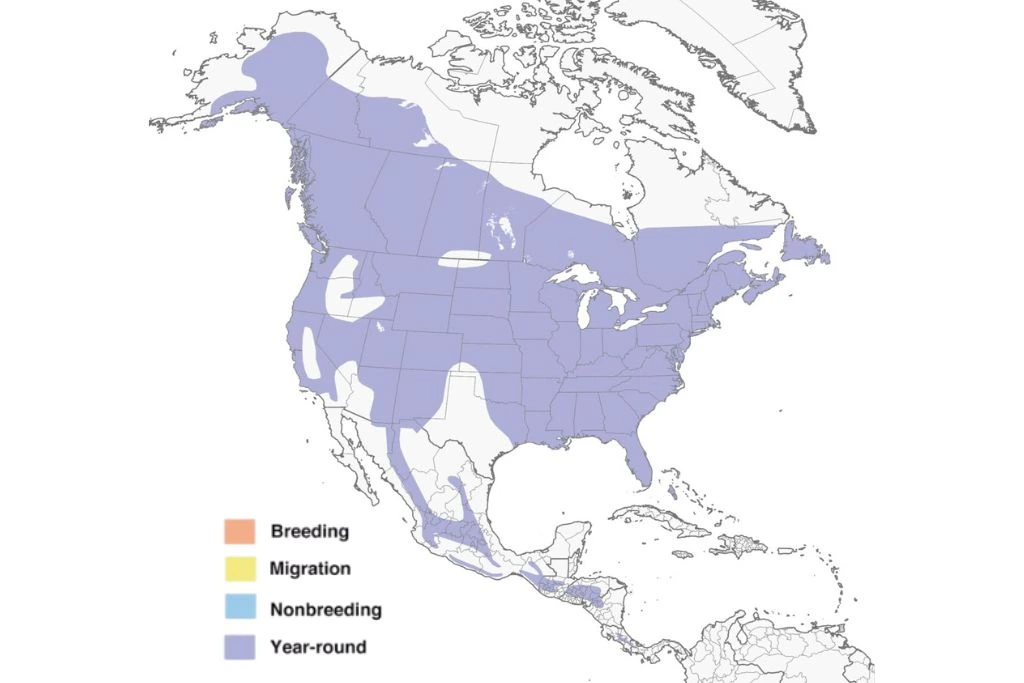
14. Mourning Doves
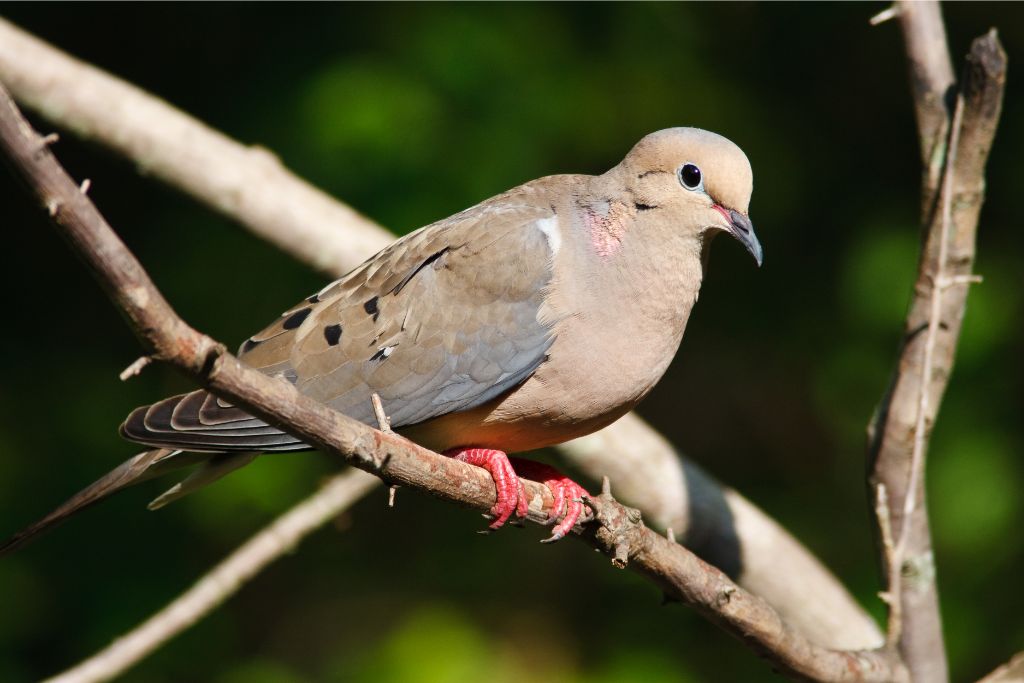
- Kingdom: Animalia
- Phylum: Chordata
- Class: Aves
- Order: Columbiformes
- Genus: Zenaida
- Species: Z. macroura
Mourning doves (Zenaida macroura) are medium-sized birds, measuring about 9 to 13 inches long. They have a slender body with a long, pointed tail that aids their swift and agile flight.
These birds possess a soft color palette featuring shades of gray, tan, and light brown. Their small heads are adorned with beautiful pinkish-gray feathers, and their eyes are dark and expressive.
A variety of temperatures and environmental circumstances are suitable for mourning doves. They are commonly found in open areas such as fields, meadows, woodlands, parks, and even suburban gardens. These birds have developed adaptations that help them survive in their habitats.
Regarding nesting, mourning doves prefer sturdy, open structures like tree branches, ledges, or ground. Their nests are constructed with twigs and grass, providing a secure foundation for their eggs.
These birds are monogamous, staying with the same mate for numerous breeding seasons. The female dove lays 2 creamy-white eggs, which both parents incubate. Adult birds feed their youngsters “pigeon milk,” a unique secretion.
In Michigan, you can find mourning doves in a variety of habitats. They’re found in open fields, forest edges, and residential areas with bird feeders and gardens. Look and listen for these magnificent birds scavenging for seeds on telephone wires, treetops, or the ground.
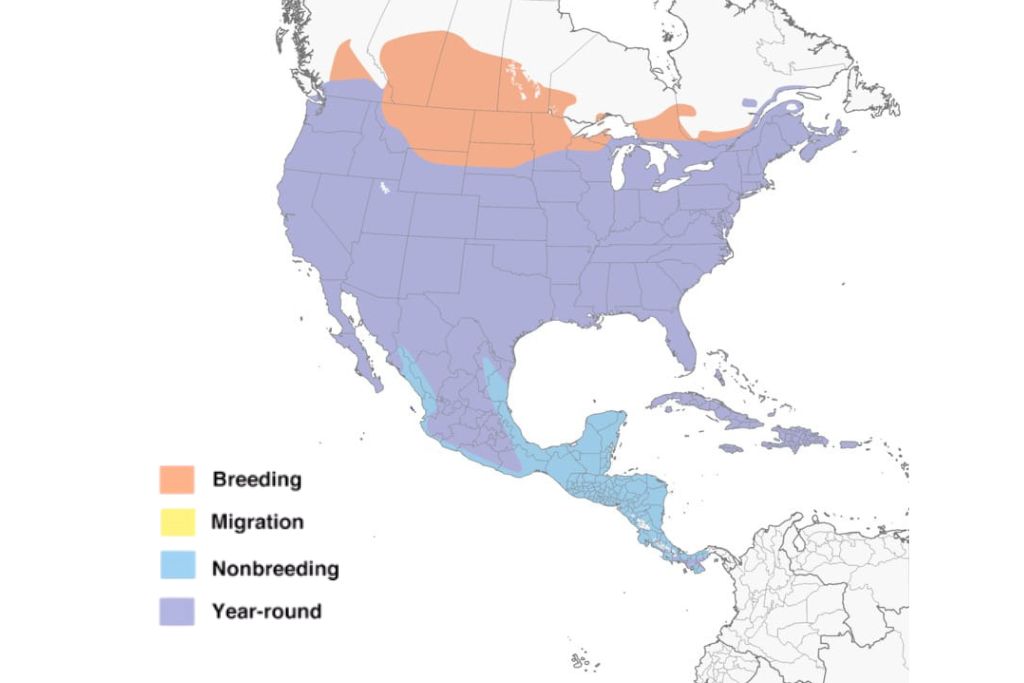
15. Eurasian Wigeon
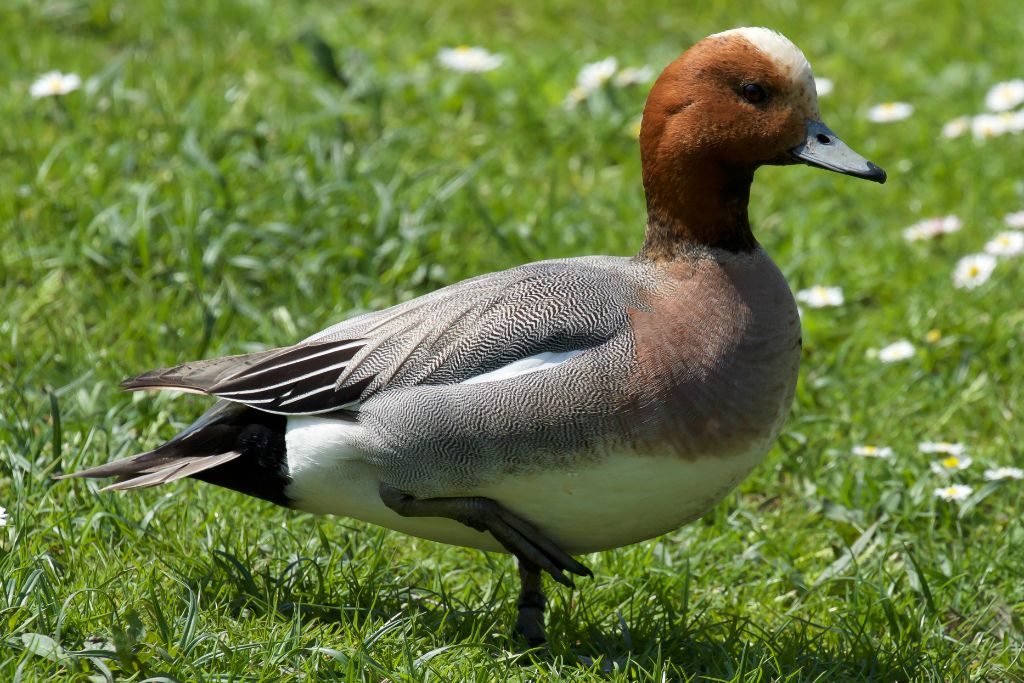
- Kingdom: Animalia
- Phylum: Chordata
- Class: Aves
- Order: Anseriformes
- Genus: Mareca
- Species: M. Penelope
Birdwatchers in Michigan enjoy seeing the Eurasian wigeon (Mareca penelope), a graceful and colorful duck. While native to Europe and Asia, this migratory duck can be observed in the state during its wintering season.
Characterized by its chestnut head, pink breast, and gray body, the male Eurasian wigeon is a stunning sight. Its wings feature a distinctive white patch, which becomes even more apparent during flight. The female displays a mottled brown plumage that helps her blend into the surrounding wetlands.
These birds can be found in various aquatic habitats, including lakes, ponds, marshes, and coastal areas. It feeds on a diet primarily consisting of aquatic plants, seeds, and invertebrates.
They graze on the land and dive into the water, using their bill to filter out their preferred food.
Male Eurasian wigeons head-bob and whistle during the breeding season. In Northern Europe and Asia, the female builds a ground nest hidden among foliage.
The Eurasian wigeon can hybridize with different duck species, yielding distinct hybrids. These hybrid ducks can sometimes be observed in Michigan, adding an element of excitement for bird enthusiasts.
During winter migration, the Eurasian wigeon can be seen along Michigan’s beaches and big bodies of water. Keep an eye out for these beautiful ducks as they bring a touch of elegance to Michigan’s winter landscapes.
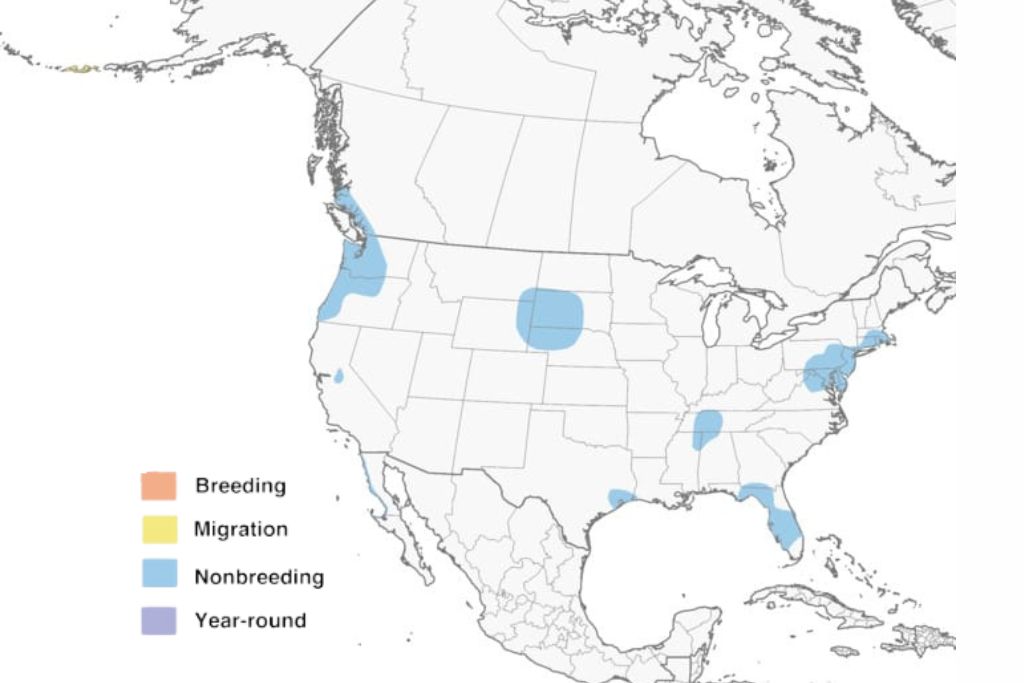
16. Royal Tern

- Kingdom: Animalia
- Phylum: Chordata
- Class: Aves
- Order: Charadriiformes
- Genus: Thalasseus
- Species: T. maximum
Michigan is home to a diverse range of bird species, and one of the magnificent birds you can spot here is the royal tern (Thalasseus maximus). These birds are known for their striking appearance and interesting behaviors.
The royal tern is a medium-sized bird with a wingspan of around 3 feet. They have sleek gray, feathered bodies and black caps.
Their orange beak stands out. This long, slender beak helps them catch fish by diving into the water from great heights. Royal terns also have webbed feet, allowing them to swim and walk on sandy beaches easily.
These birds live along Michigan’s shoreline, especially near the Great Lakes. They prefer sandy beaches, estuaries, and saltwater marshes as their habitats. Royal terns have adapted to this environment by developing excellent diving skills. They dive headfirst into the water to catch fish from above.
During the breeding season, royal terns gather in colonies on beaches and islands. They construct simple nests on the ground, typically consisting of shallow depressions lined with bits of vegetation. The female lays 1 to 2 eggs, which both parents take turns incubating. Once the chicks hatch, they are cared for by both parents and fed with regurgitated fish.
Interesting facts about royal terns include their long-distance migration. These birds can travel from as far as South America to reach Michigan during the summer months. They are recognized for their powerful, harsh “Kerr-ik” calls. A Royal Tern lives 20 years on average.
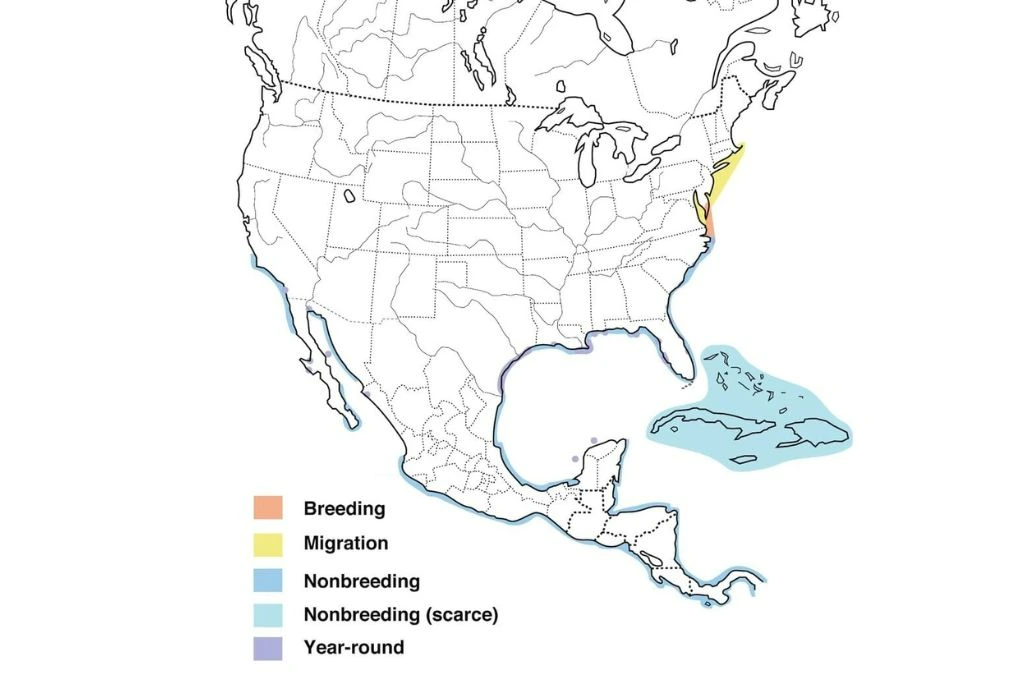
17. American Wigeon
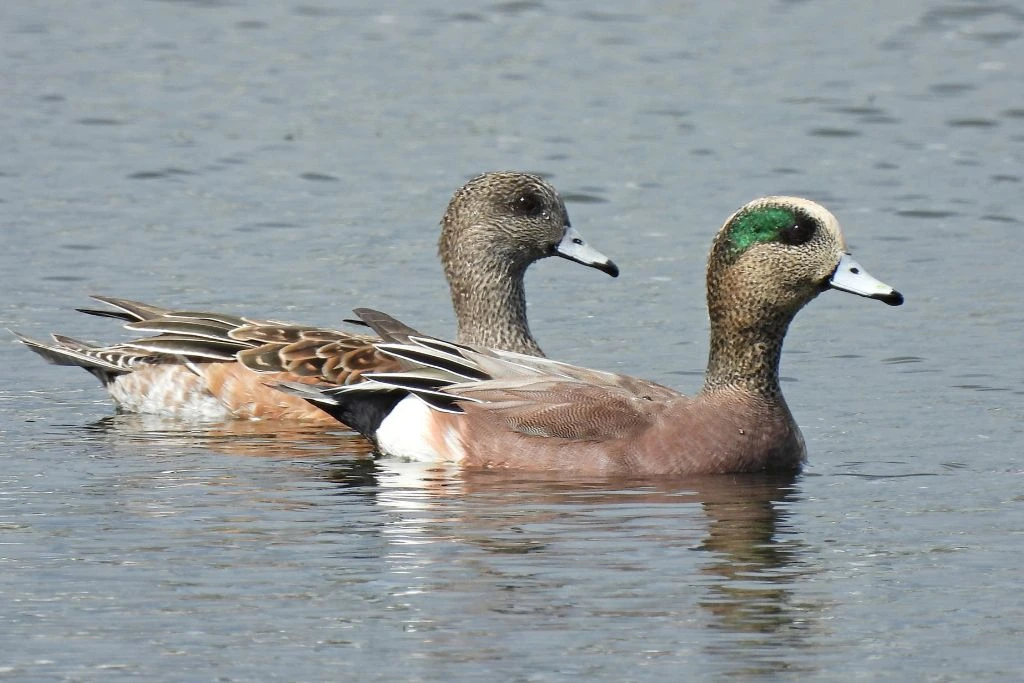
- Kingdom: Animalia
- Phylum: Chordata
- Class: Aves
- Order: Anseriformes
- Genus: Mareca
- Species: M. americana
The American wigeon (Mareca americana) is a medium-sized duck with a distinctive appearance. Drakes, or male American wigeons, have a green eye patch and a chestnut head with a dazzling white crown. Their bodies are adorned with gray, brown, and white feathers.
Females, or hens, have more muted colors with a brown-mottled appearance. Both males and females have a blue-gray bill with a black tip.
These ducks can be found in Michigan’s wetland areas, including marshes, lakes, and ponds. They are skilled swimmers and feed on aquatic plants, grasses, and small invertebrates. Webbed feet help American wigeons swim efficiently. Lamellae on their bills allow them to filter food from the water.
During the breeding season, American wigeons form pairs and build nests in grassy areas near water. The nests are lined with down feathers and concealed among vegetation to provide protection. The female lays a clutch of around 8 to 10 eggs, and both parents take turns incubating them for about a month.
American wigeons’ “wee-oo” whistling calls are interesting. These ducks are also known for their sociable nature, often forming large flocks during the winter months. The average life expectancy of an American wigeon is around 10 years.
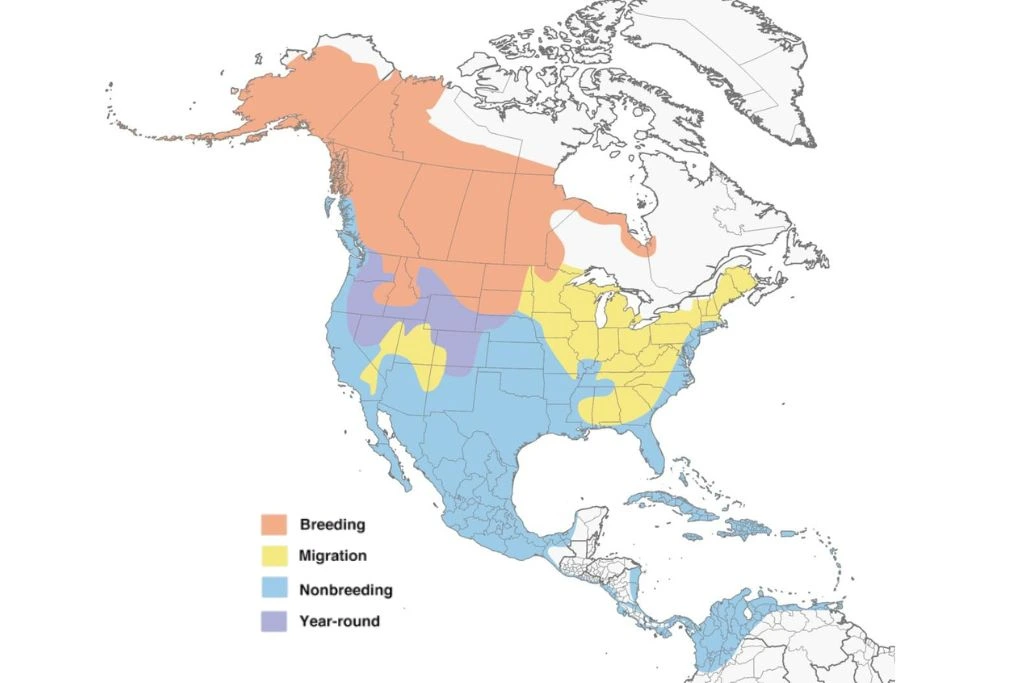
18. Blackburnian Warbler
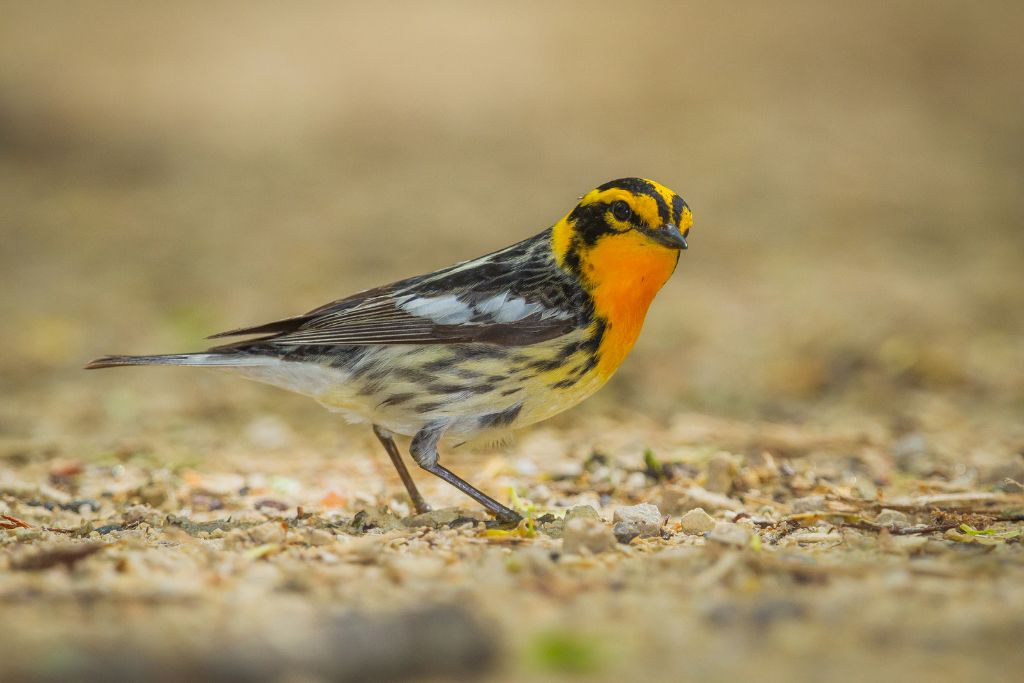
- Kingdom: Animalia
- Phylum: Chordata
- Class: Aves
- Order: Passeriformes
- Genus: Setophaga
- Species: S. fusca
The average length of a blackburnian warbler (Setophaga fusca) is only 4.5 inches. Males stand out with orange throats and breasts against their black backs and wings. They also have pronounced white wing bars and a black crown that sets them apart. The female is more subdued in appearance, having an olive-green back and a yellowish neck. Both sexes have sharp beaks that are used for catching insects.
These warblers can be found in Michigan’s forests, particularly in coniferous and mixed woodlands. They spend their summers in the northern parts of the state, building their nests and raising their young. In this area, blackburnian warblers cling to tree branches and trunks to find insects. They are superb aerial acrobats, darting between branches to catch prey.
When it comes to nesting and breeding, blackburnian warblers are monogamous and highly territorial. The male establishes his territory by singing a high-pitched, musical song from treetops. The female builds a cup-shaped nest, usually placed on a horizontal branch high above the ground.
These tiny birds navigate from Central and South America to Michigan for breeding. They also help reduce forest pests by eating insects. The average life expectancy of a blackburnian warbler is around 5 years.
To spot blackburnian warblers in Michigan, head to the forested areas and listen to their distinctive song. These warblers are fast and hard to follow, so look for brilliant orange flashes in the tree limbs. Birdwatching in Michigan’s woods is thrilling because they provide color to the tranquility.
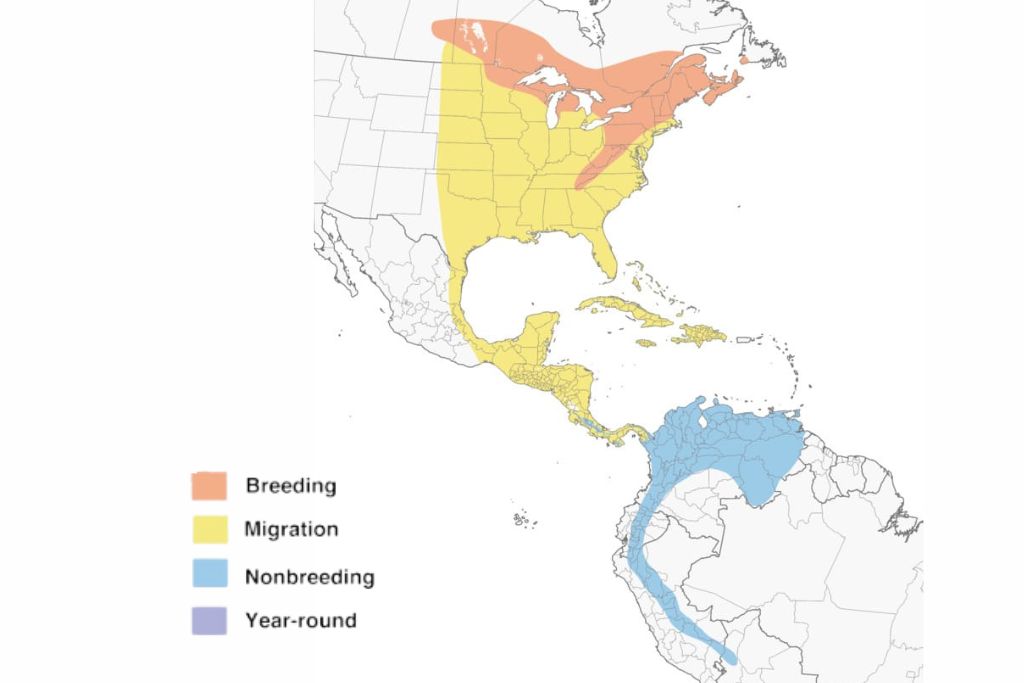
19. American Crow
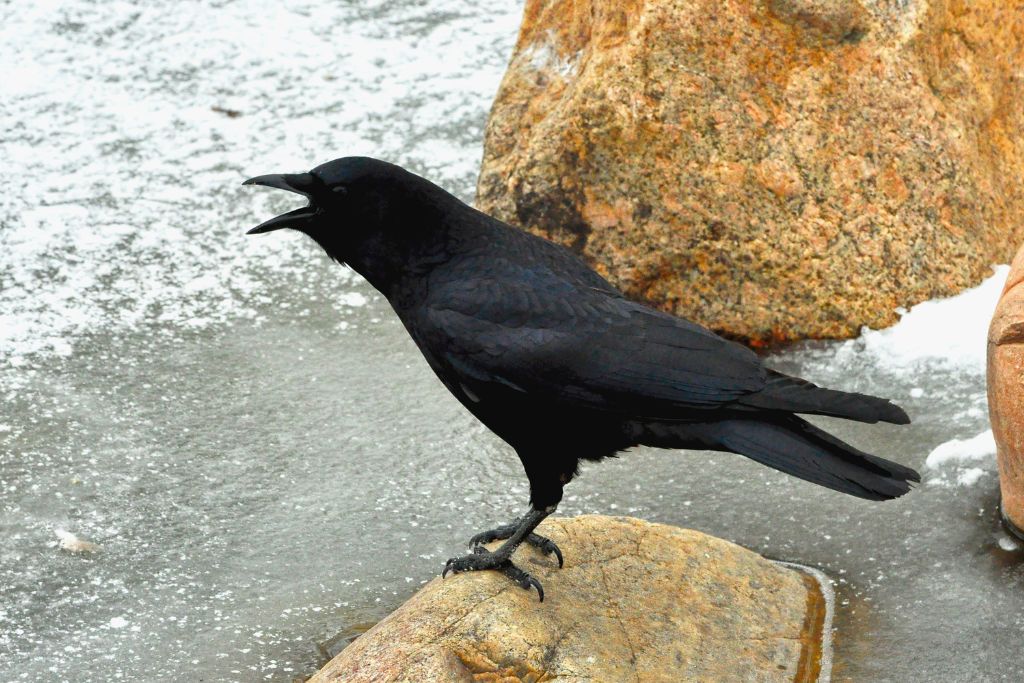
- Kingdom: Animalia
- Phylum: Chordata
- Class: Aves
- Order: Passeriformes
- Genus: Corvus
- Species: C. brachyrhynchos
The American crow (Corvus brachyrhynchos) is a medium-sized bird with all-black plumage and a sturdy build. They have a wingspan of about 3 feet and a body length of around 17 inches. The American crow’s powerful beak lets it dig for food and split nuts and seeds. Their vast, black eyes help them see food and travel.
These crows can be found throughout Michigan, from urban areas to forests and open fields. They are highly adaptable and can thrive in diverse habitats. American crows have developed various adaptations to survive in different environments. Their diet consists of various foods, including insects, small animals, fruits, grains, and carrion.
American crows are known for their complex social behaviors and strong family bonds. They establish tiny families or big flocks to share food sources and protect each other from predators.
During the breeding season, pairs of crows build bulky nests in trees using twigs, grass, and other available materials. The female lays a clutch of 3 to 6 eggs, which both parents incubate for about 18 days. The chicks are cared for by their parents until they can fend for themselves.
One of the fascinating things about American crows is their capacity for complex problem-solving. These birds have been observed using tools like sticks to extract food from hard-to-reach places.
They also have a diverse repertoire of calls and can mimic other sounds, including human voices. In the wild, American crows survive 7 to 8 years, although, they can live much longer in captivity.
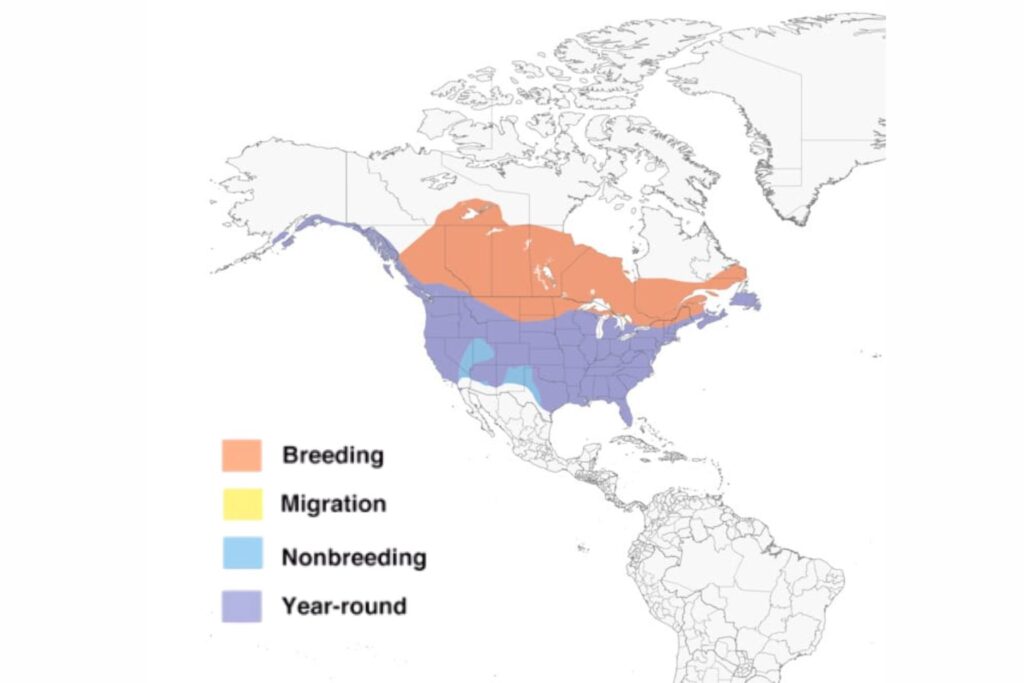
20. Summer Tanager

- Kingdom: Animalia
- Phylum: Chordata
- Class: Aves
- Order: Passeriformes
- Genus: Piranga
- Species: P. rubra
The summer tanager (Piranga rubra) is a medium-sized bird, slightly smaller than a robin. Males are red like ripe cherries, while females are yellow-green. Their bills are thick and slightly hooked, well-suited for capturing insects mid-air. These birds are excellent fliers, gracefully maneuvering through the forest canopy in pursuit of their prey.
Summer tanagers breed in Michigan but winter in Central and South America. They like deciduous and mixed woodlands in Michigan for insects and ripe fruits. Long, pointed wings let summer tanagers fly in this habitat. Their bills are also well-designed for capturing insects on the wing.
Male summer tanagers sing enchanting songs from treetops to lure ladies during the breeding season. The females build cup-shaped nests in the branches of trees, skillfully weaving together twigs and grasses. They lay a clutch of 2 to 4 eggs, which the female incubates for about 2 weeks.
One interesting fact about summer tanagers is their feeding behavior. They glean insects from leaves and capture flying insects in mid-air. They disperse seeds by eating mulberries, cherries, and grapes. The average life expectancy of a summer tanager is around 8 years.
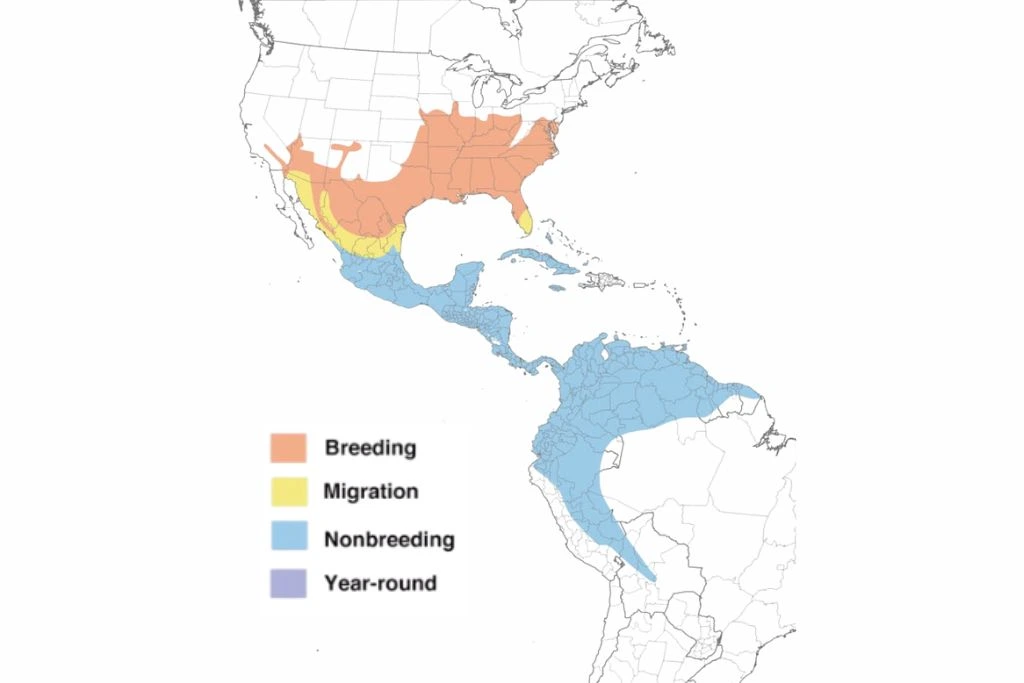
21. House Finch
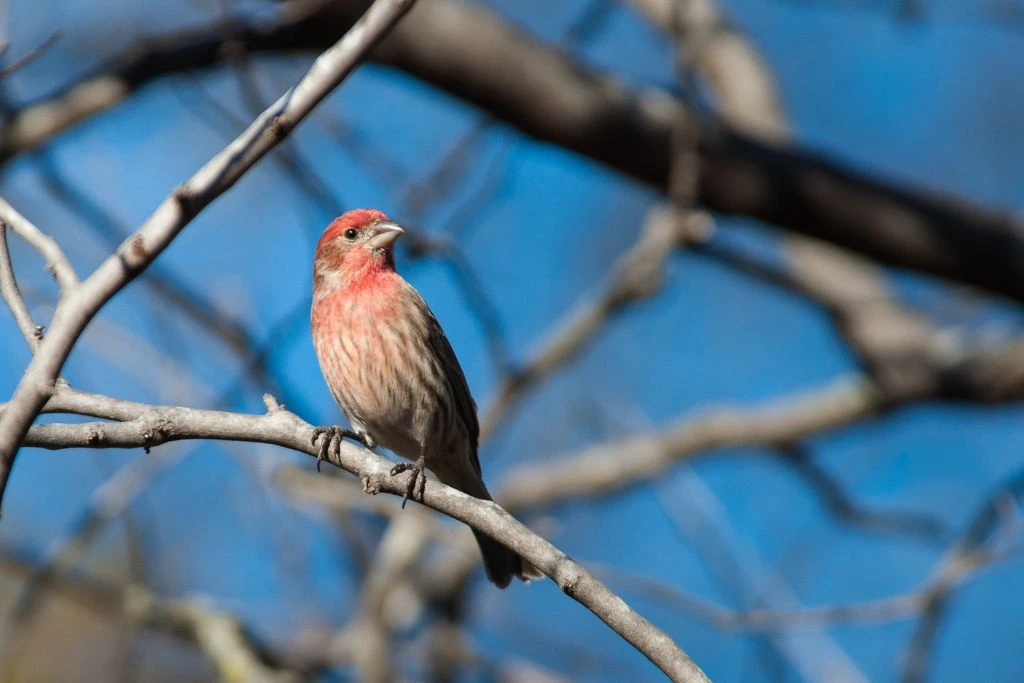
- Kingdom: Animalia
- Phylum: Chordata
- Class: Aves
- Order: Passeriformes
- Genus: Haemorhous
- Species: H. mexicanus
When exploring the diverse bird population in Michigan, one can’t miss the vibrant house finch (Haemorhous mexicanus). These tiny birds possess a colorful appearance that adds a cheerful touch to their surroundings.
Males have reddish heads, breasts, and rumps, while females are more muted. Their sturdy beaks are perfectly designed for cracking open seeds, which form a significant part of their diet.
Adapted to various habitats, house finches are commonly found in urban areas, forests, and even deserts. Using available resources, they make their nests in trees, shrubs, birdhouses, and hanging plants. To protect her eggs, the female house finch builds a cup-shaped nest from twigs, grass, and other plant materials.
These birds are known for their lively courtship behaviors during the breeding season. To attract the ladies, the males sing and fly acrobatically. House finches are pretty social creatures, forming flocks that can include other finch species.
House finches have an average life expectancy of around 3 to 5 years. Michigan backyards, gardens, parks, and woodlands provide food and nesting for these magnificent birds.
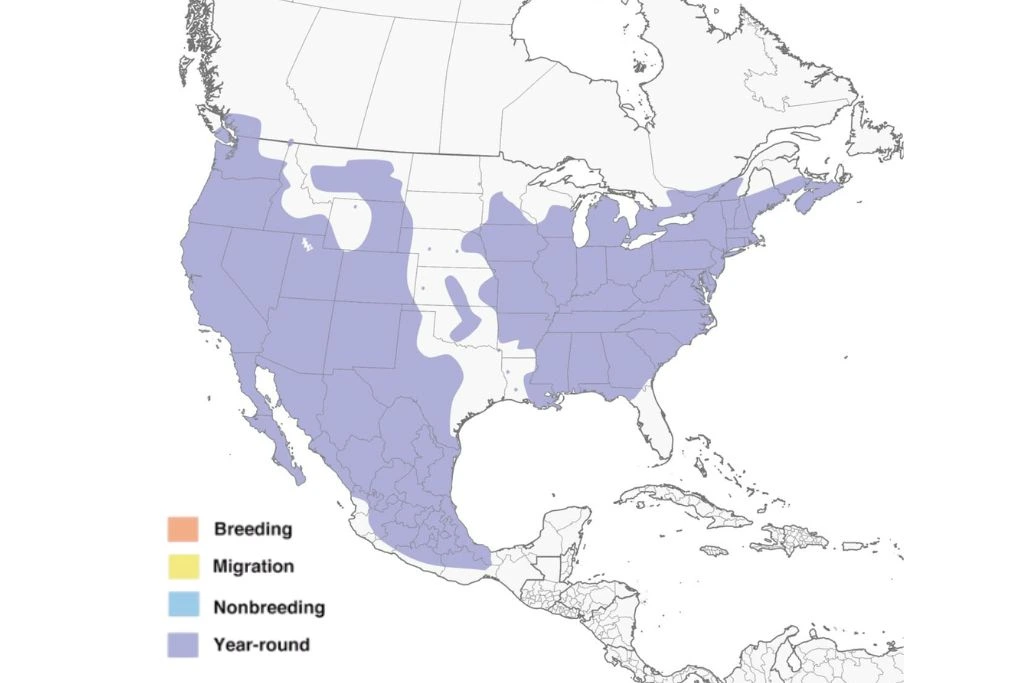
22. Yellow-Rumped Warbler
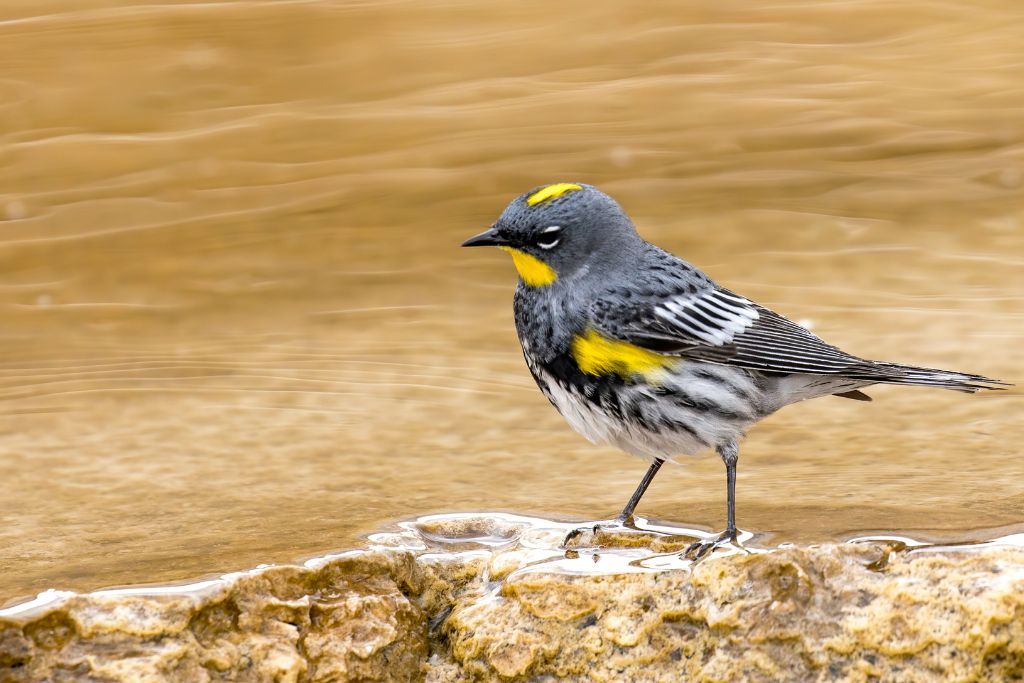
- Kingdom: Animalia
- Phylum: Chordata
- Class: Aves
- Order: Passeriformes
- Genus: Setophaga
- Species: S. coronata
The vivid colors and joyful songs of the yellow-rumped warbler (Setophaga coronata) enhance Michigan’s scenery. Their distinctive yellow patches on the rump, sides, and crown make these tiny birds easily identifiable. The breeding plumage is bright yellow, whereas the non-breeding plumage is more subdued.
Yellow-rumped warblers have excellent adaptations that allow them to thrive in various habitats. They prefer coniferous forests and mixed woodlands, where they can find an abundance of insects, berries, and seeds. These intelligent birds can digest berries’ waxy coating, making them one of the few warbler species that can survive the winter.
The nesting season brings about interesting breeding behaviors among yellow-rumped warblers. Females build cup-shaped nests using grass, moss, and bark fibers, often hidden within dense foliage. Males defend territories and perform aerial shows to attract mates.
Yellow-rumped warblers have an average life expectancy of about 5 to 10 years. These birds migrate through Michigan woodlands, parks, and gardens in spring and fall.

23. Wood Duck
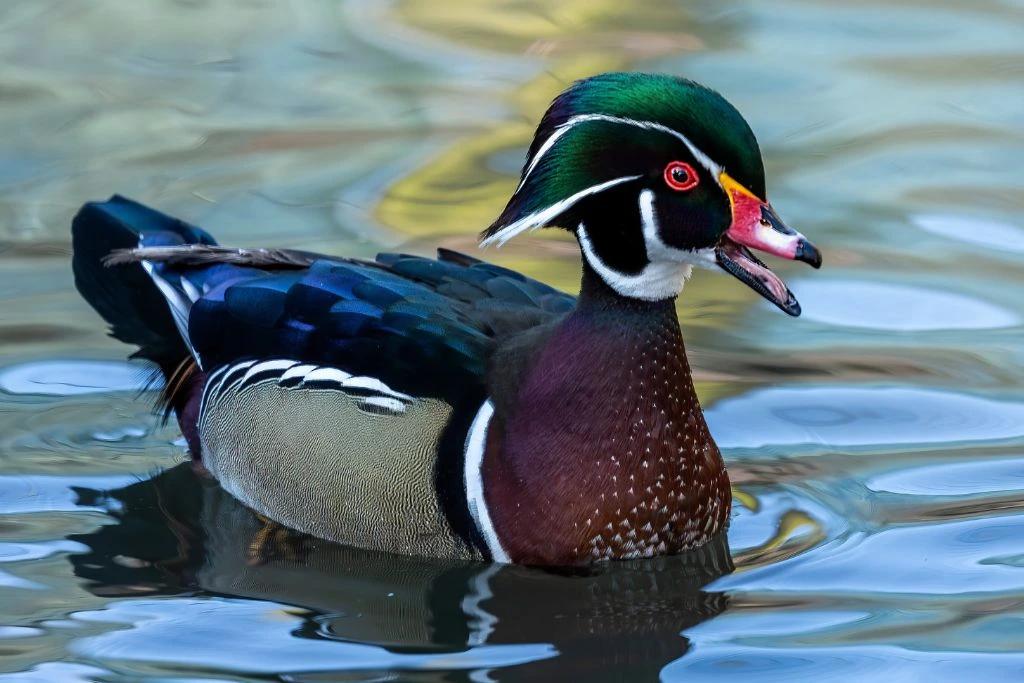
- Kingdom: Animalia
- Phylum: Chordata
- Class: Aves
- Order: Anseriformes
- Genus: Aix
- Species: A. sponsa
One of the most striking birds in Michigan is the wood duck (Aix sponsa). This species is often considered a living work of art with its vibrant colors and unique patterns. Males have a crested head with iridescent green and purple feathers, while females are more gray and brown. Their long, broad tails add to their graceful appearance.
Wood ducks have remarkable adaptations that enable them to thrive in wetland environments. They possess strong claws that help them perch and nest in trees, unlike many other duck species.
These birds are commonly found in wooded swamps, marshes, and along the shores of lakes and rivers. They search for seeds, acorns, fruits, insects, and small aquatic organisms using their keen beaks.
When it comes to nesting and breeding, wood ducks have interesting behaviors. Females select nesting sites in tree cavities or nest boxes close to water. Just hours after hatching, the downy chicks fearlessly leap from their nests, guided by their mother’s calls. The ducklings’ delicate spines allow them to bounce back securely before swimming.
They have an average life expectancy of about 5 to 10 years. They are found in marshes, swamps, and lakeshores with lush vegetation in Michigan.
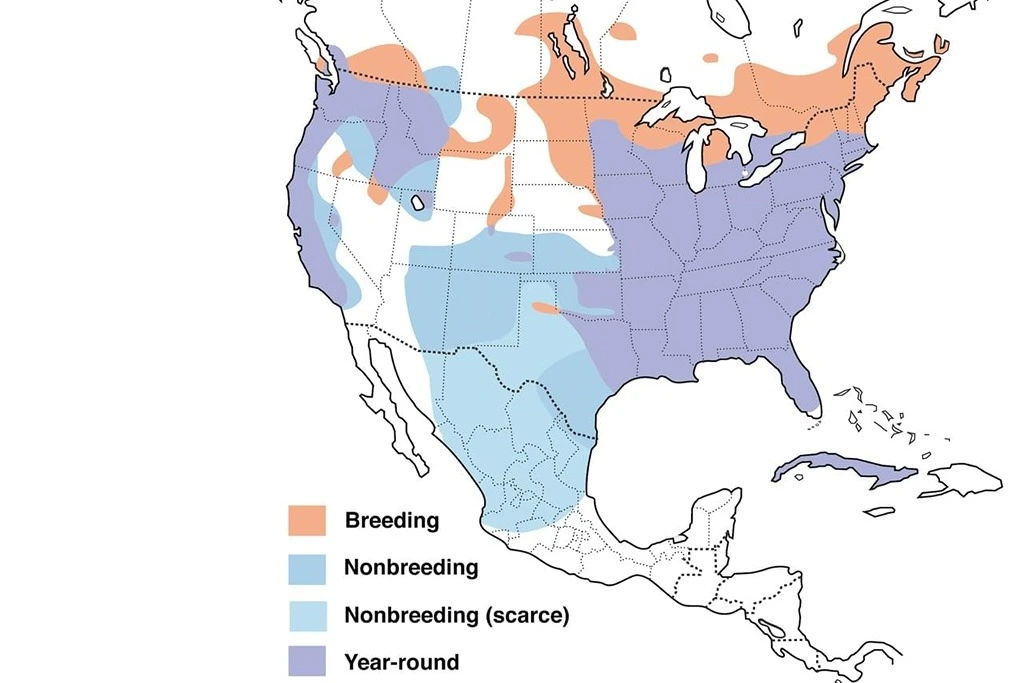
24. Blue Jay
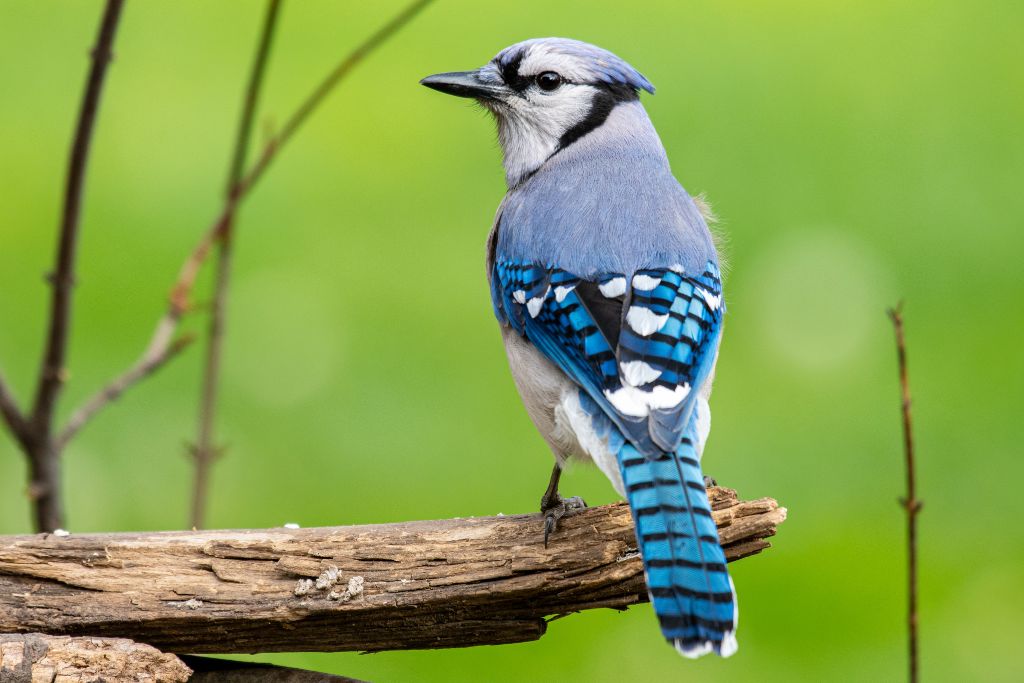
- Kingdom: Animalia
- Phylum: Chordata
- Class: Aves
- Order: Anseriformes
- Genus: Cyanocitta
- Species: C. cristata
Michigan’s iconic blue jay (Cyanocitta cristata) has bright blue feathers and a crested head. These bold, intelligent birds live in forests, parks, and residential areas. Blue jays are striking due to their muscular bulk and white and black markings on their wings and tail.
Adapted to various habitats, blue jays can thrive in both urban and rural environments. They eat seeds, nuts, fruits, insects, and occasionally small animals. Their strong beaks are perfect for cracking open nuts and acorns, which they often cache for later consumption.
During nesting season, blue jays exhibit interesting behaviors. Females build cup-shaped nests using twigs, grass, and mud, usually positioned in the fork of a tree branch. Males actively defend their territory and assist with nest-building duties. These social birds communicate through various calls, including their well-known loud, raspy “jay” call.
They have an average life expectancy of about 7 to 8 years. These energetic birds are found in Michigan’s forests, woodlands, urban parks, and backyards.
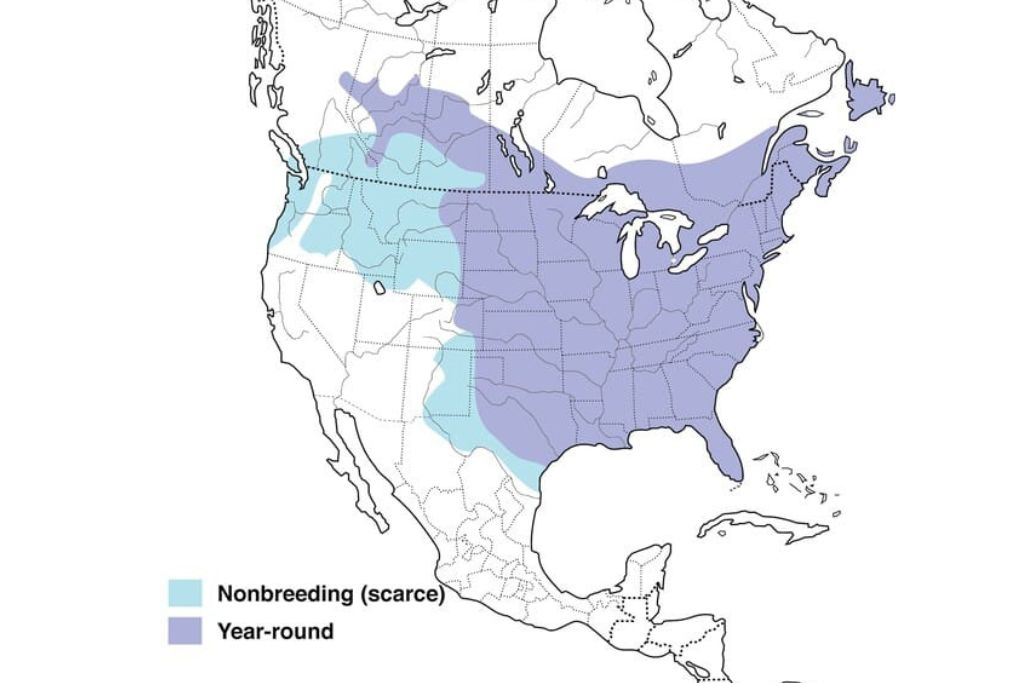
25. Mallard
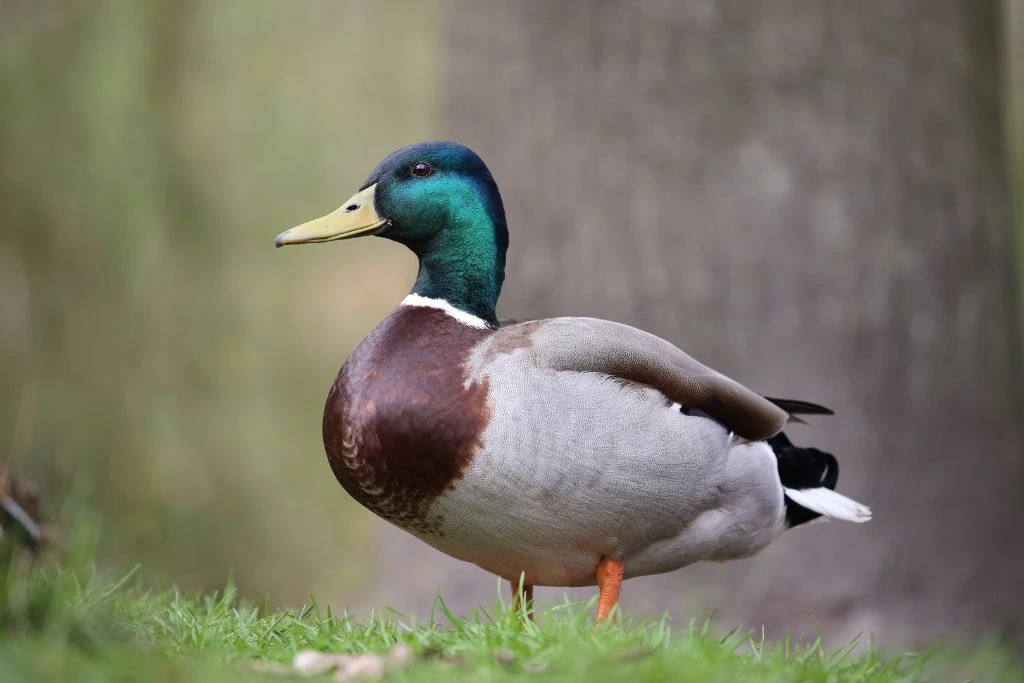
- Kingdom: Animalia
- Phylum: Chordata
- Class: Aves
- Order: Anseriformes
- Genus: Anas
- Species: A. platyrhynchos
Michigan’s ponds, lakes, and wetlands are home to the colorful mallard duck (Anas platyrhynchos). Male Mallards, known as drakes, feature a glossy green head, a yellow bill, a chestnut breast, and grayish body feathers. Females, called hens, have mottled brown plumage that provides excellent camouflage when nesting.
Mallards are adaptable birds that can thrive in various aquatic habitats. They live in freshwater ponds, marshes, and rivers and eat aquatic plants, seeds, insects, and small animals. These ducks have webbed feet and waterproof feathers, enabling them to swim and dive effortlessly.
The nesting and breeding behaviors of mallards are intriguing. Females create nests on the ground, often concealed in dense vegetation near water. The mother incubates the eggs for a month before caring for the ducklings. Mallard ducklings are capable of swimming and foraging for food shortly after birth.
Their typical lifespan is between 5 and 10 years. You can spot these ducks in various water bodies in Michigan, from small ponds and lakes to large rivers.

26. Red-Winged Blackbird
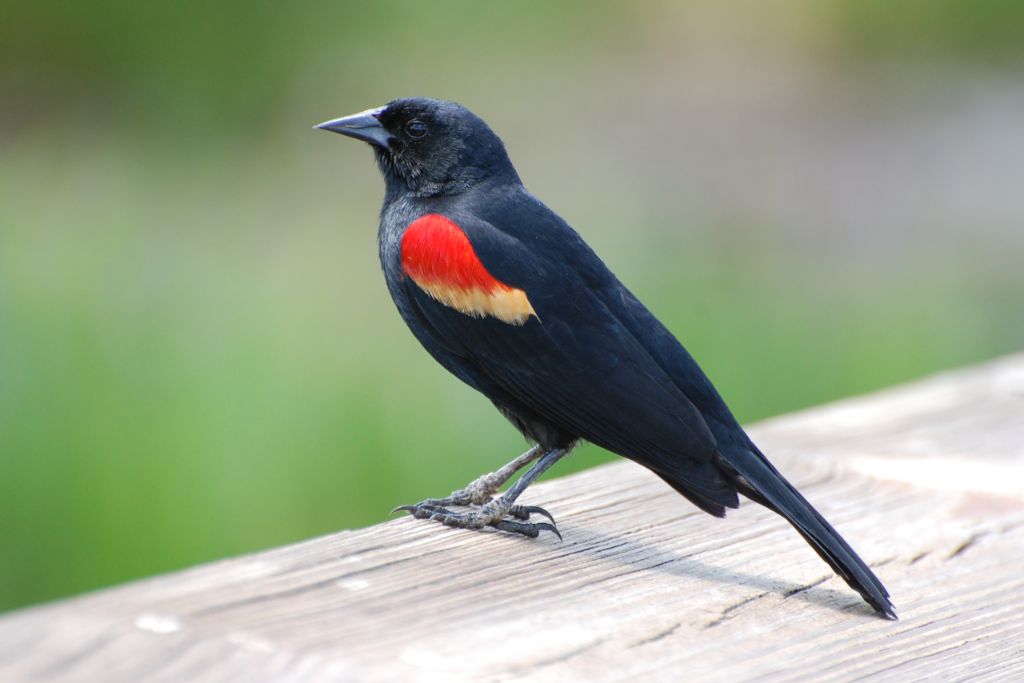
- Kingdom: Animalia
- Phylum: Chordata
- Class: Aves
- Order: Passeriformes
- Genus: Agelaius
- Species: A. phoeniceus
Red-winged blackbirds (Agelaius phoeniceus) are common throughout Michigan, and with good reason. These birds have a distinctive red patch on their wings, which gives them their name. The males are black with bright red and yellow shoulder patches, while the females have streaky brown plumage. They are small to medium-sized birds about 8 to 9 inches long.
In Michigan, these versatile birds live in wetlands, marshes, and meadows. They have specialized adaptations that help them thrive in these environments. Their sharp beaks are ideal for capturing insects, spiders, and seeds, which comprise a large part of their diet. These birds defend their territory using a “conk-la-ree” call.
It is common for red-winged blackbirds to build their nests among tall grasses or cattails near bodies of water. Males use their crimson shoulder patches to attract mates and prevent intruders. Females incubate 3 to 5 eggs per clutch while males defend the area.
Red-winged blackbirds are highly social birds and often gather in large flocks during migration. These flocks can number in the thousands, creating an incredible spectacle. The Shiawassee National Wildlife Refuge and Pointe Mouillee State Game Area have the most red-winged blackbirds in Michigan.
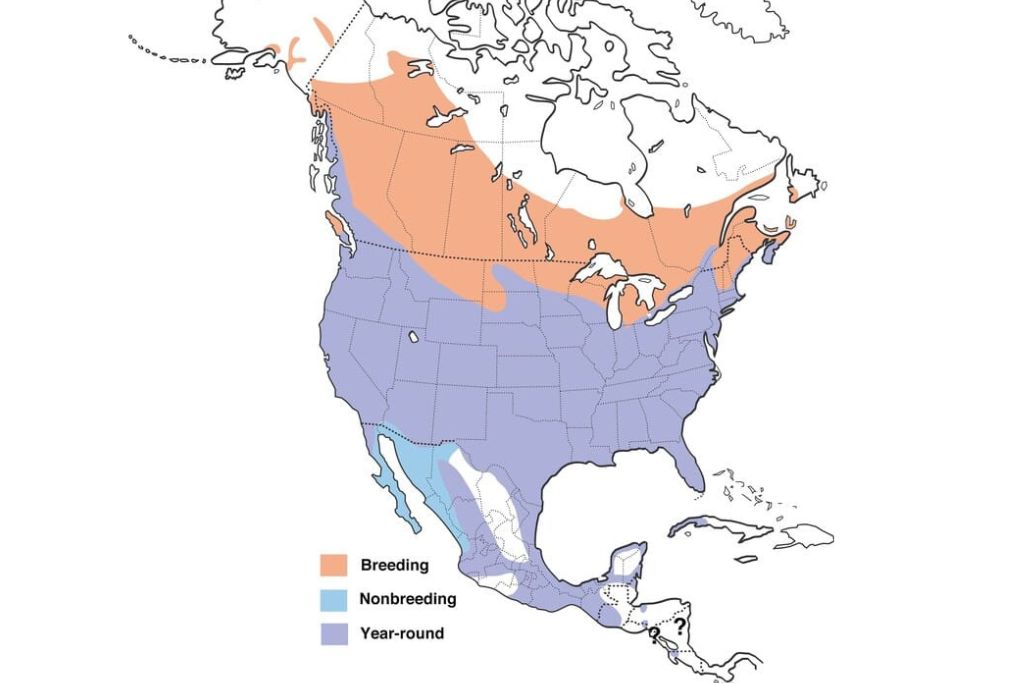
27. Broad-Winged Hawk
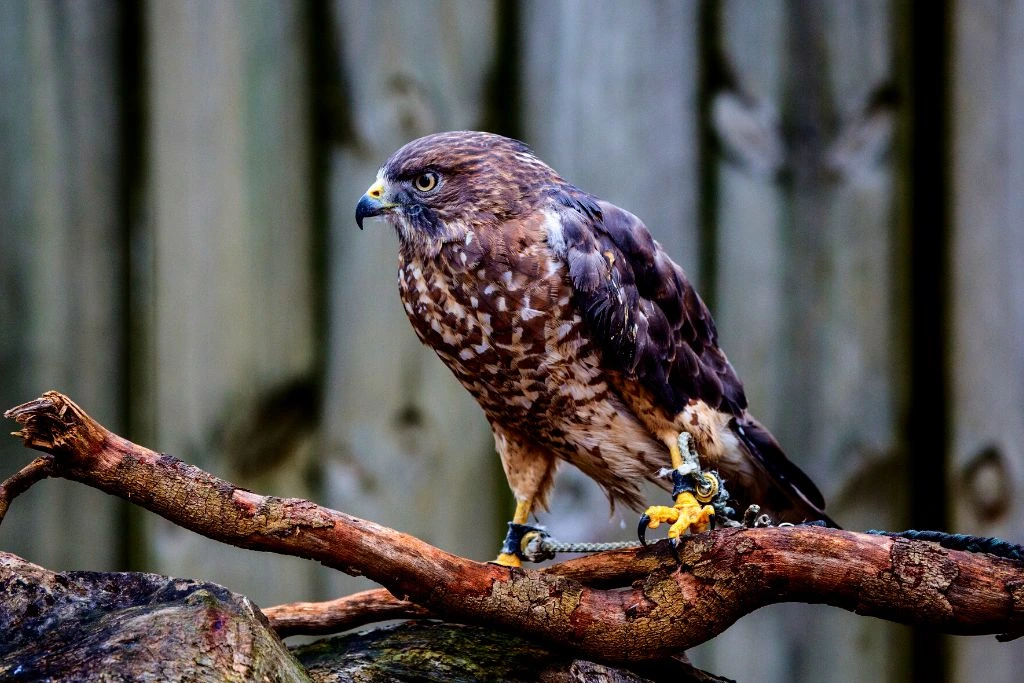
- Kingdom: Animalia
- Phylum: Chordata
- Class: Aves
- Order: Accipitriformes
- Genus: Buteo
- Species: B. platypterus
The broad-winged hawk (Buteo platypterus) is a fascinating bird of prey found in the woodlands and forests of Michigan. These hawks are medium-sized with a wingspan of about 2 to 3 feet. They have broad wings and a short, wide tail, which helps them maneuver swiftly through the trees while hunting.
Broad-winged hawks are adaptable, thriving in deciduous and mixed woods. They have excellent vision and sharp talons, making them skilled hunters. They eat mice, voles, chipmunks, reptiles, and amphibians.
During nesting season, broad-winged hawks build their nests in the forks of tall trees, usually near the edges of forests. They construct their nests using twigs and line them with softer materials like moss and bark. These hawks are monogamous and form long-lasting pairs, often returning to the same nesting site year after year.
An interesting fact about broad-winged hawks is their unique migration behavior. In winter, they move in big flocks called “kettles” to Central and South America. These kettles can contain hundreds or thousands of hawks, making for an impressive sight in the sky.
In Northern Michigan, broad-winged hawks breed in forested woodlands with good nesting locations.
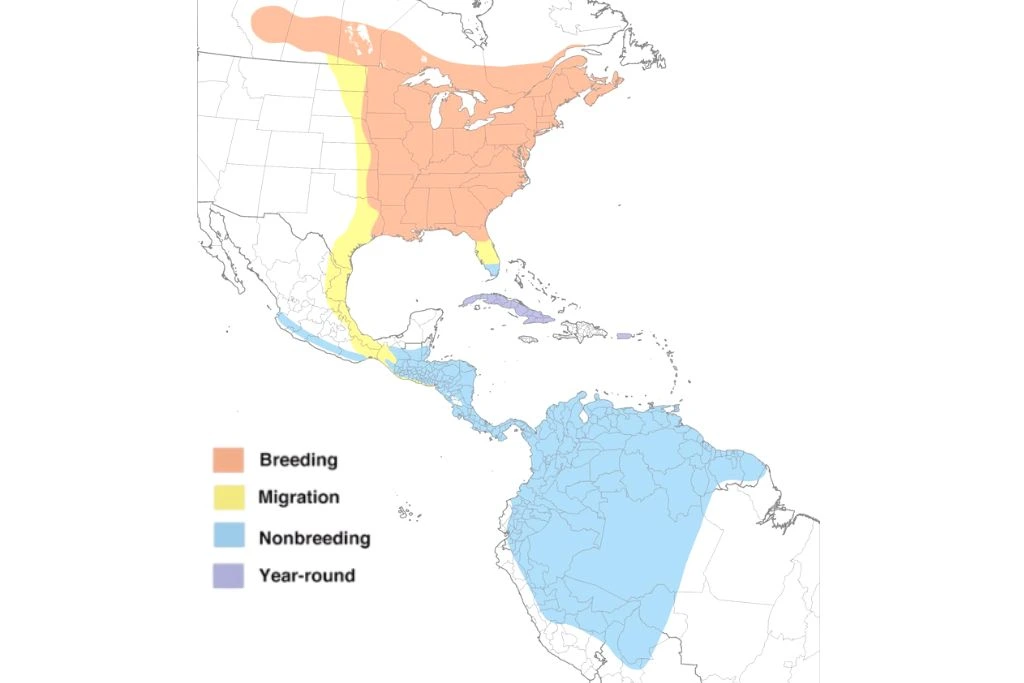
28. Tufted Titmouse
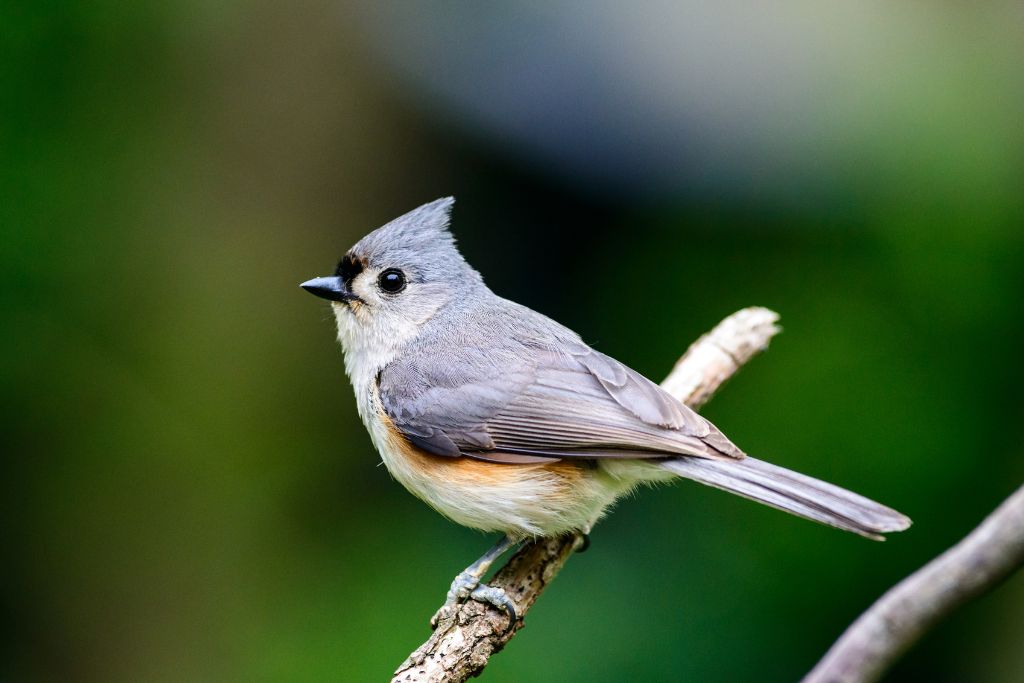
- Kingdom: Animalia
- Phylum: Chordata
- Class: Aves
- Order: Passeriformes
- Genus: Baeolophus
- Species: B. bicolor
The tufted titmouse (Baeolophus bicolor) is a compact bird, measuring around 6 inches. It has a striking combination of gray upperparts and a creamy white belly. Its charming crest-like tuft on top of its head is one of its most recognizable traits. These little birds have black eyes and a small, black beak that helps them search for food.
Tufted titmice are skilled at adapting to their surroundings. They have strong legs and feet that enable them to cling to tree branches and bark while foraging for food.
These birds are commonly found in deciduous forests, woodlands, and suburban areas with ample tree cover. They can easily navigate branches and foliage to find insects, seeds, berries, and nuts, their primary diet.
When it comes to nesting, the tufted titmouse is quite resourceful. They nest in tree cavities using grass, moss, and fur to make their young comfortable. These birds are monogamous, meaning they mate with only one partner for life. The male tufted titmouse courts the female by providing food, hopping, and singing.
These birds have a relatively long life expectancy for a small bird. They can live up to 13 years in the wild. Michigan provides an excellent habitat for these avian creatures, which can be spotted throughout the state.
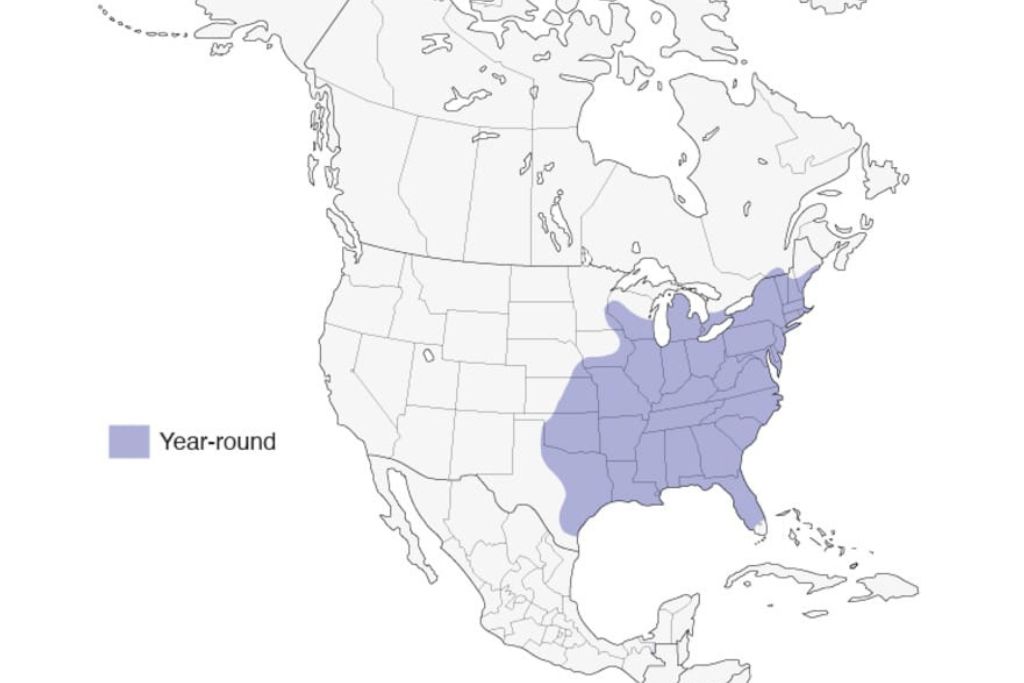
29. Black-Billed Magpie
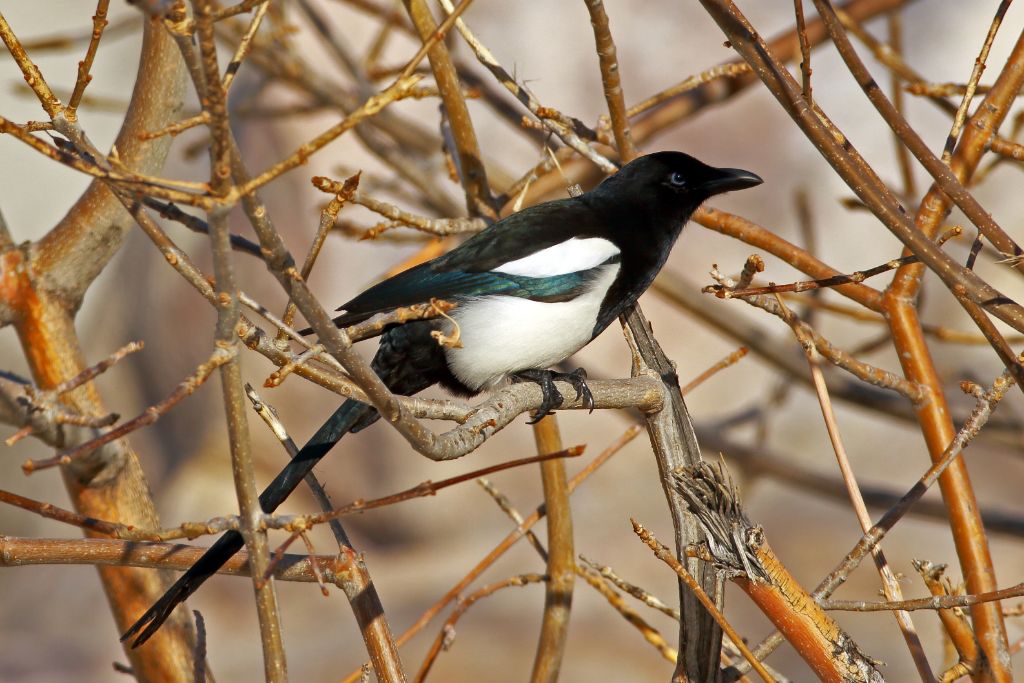
- Kingdom: Animalia
- Phylum: Chordata
- Class: Aves
- Order: Passeriformes
- Genus: Pica
- Species: P. hudsonia
The bright, cunning black-billed magpie (Pica hudsonia) lives in Michigan’s vast forests and farmlands. These striking birds have black and white plumage, with a long black tail and a white belly. They are about the size of a crow, with a length of 18 to 24 inches and a wingspan of around 2 feet.
Black-billed magpies are highly adaptable and can survive in various habitats, including suburban areas. They have a diverse diet that includes insects, small mammals, berries, seeds, and even carrion. Their strong bills and sharp claws allow them to forage for food efficiently.
They make enormous, dome-shaped twigs, grass, and mud nests for breeding. These nests are often placed high in trees or shrubs for protection. The females lay a clutch of 5 to 9 eggs, which they incubate for about 3 weeks. Both parents actively care for the young until they are ready to leave the nest.
An interesting fact about black-billed magpies is their fondness for shiny objects. They hoard flashy things, like money, jewelry, and aluminum foil. Their attraction to these objects has made them a subject of fascination and curiosity.
In Michigan, black-billed magpies are found in open fields, meadows, and woodlands, especially toward the north.
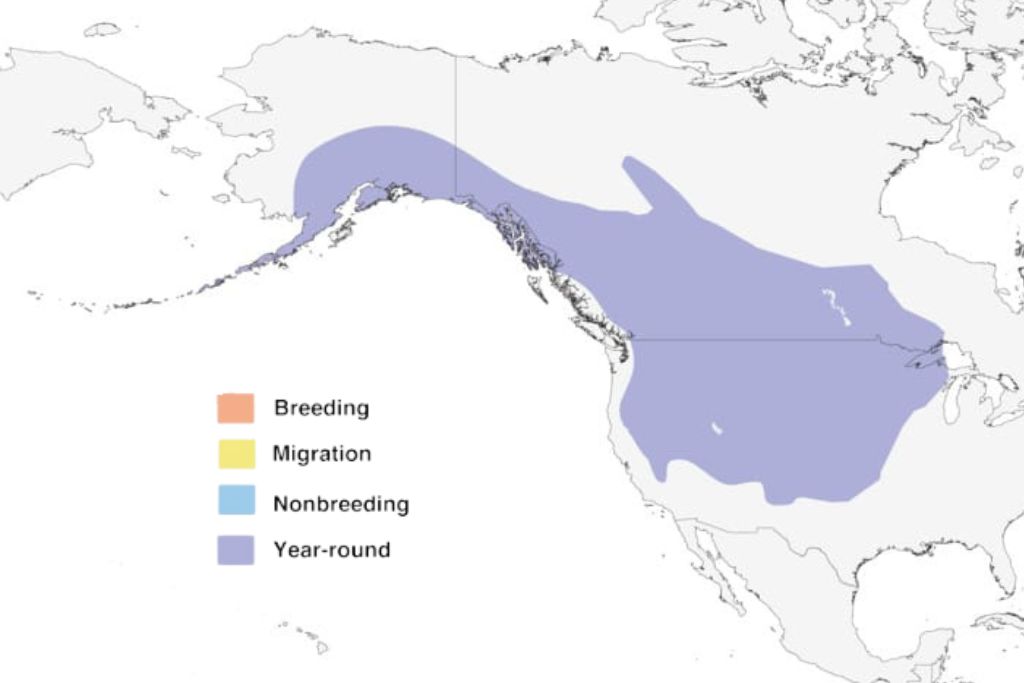
30. White-Throated Sparrow
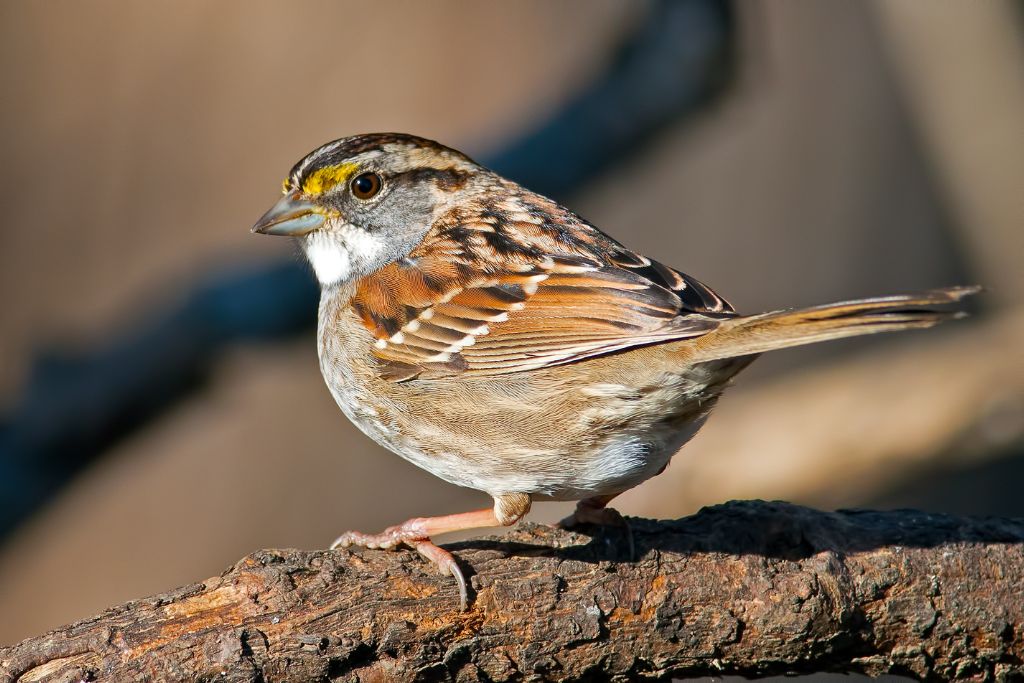
- Kingdom: Animalia
- Phylum: Chordata
- Class: Aves
- Order: Passeriformes
- Genus: Zonotrichia
- Species: Z. albicollis
The white-throated sparrow (Zonotrichia albicollis) is a common and easily recognizable bird in Michigan. These plump sparrows have a black-and-white striped head, dazzling white throat, and yellow spot between their eyes and beak. They are about 6 to 7 inches long, slightly larger than a house sparrow.
White-throated sparrows are found in various habitats, including forests, woodlands, and thickets. They have a diverse diet that includes seeds, insects, berries, and even small fruits. These birds have a wonderful song that sounds like “Oh-Sweet-Canada.”
During the nesting season, they build their nests on or near the ground, often hidden in dense vegetation. The female constructs the nest using twigs, grass, and leaves, while the male helps by bringing additional materials. The female lays a clutch of 3 to 5 eggs, and the parents take turns caring for the eggs.
They are migratory birds, spending their winters in the southern parts of the United States and Canada. In Michigan, they can be found during their breeding season from late April to September.
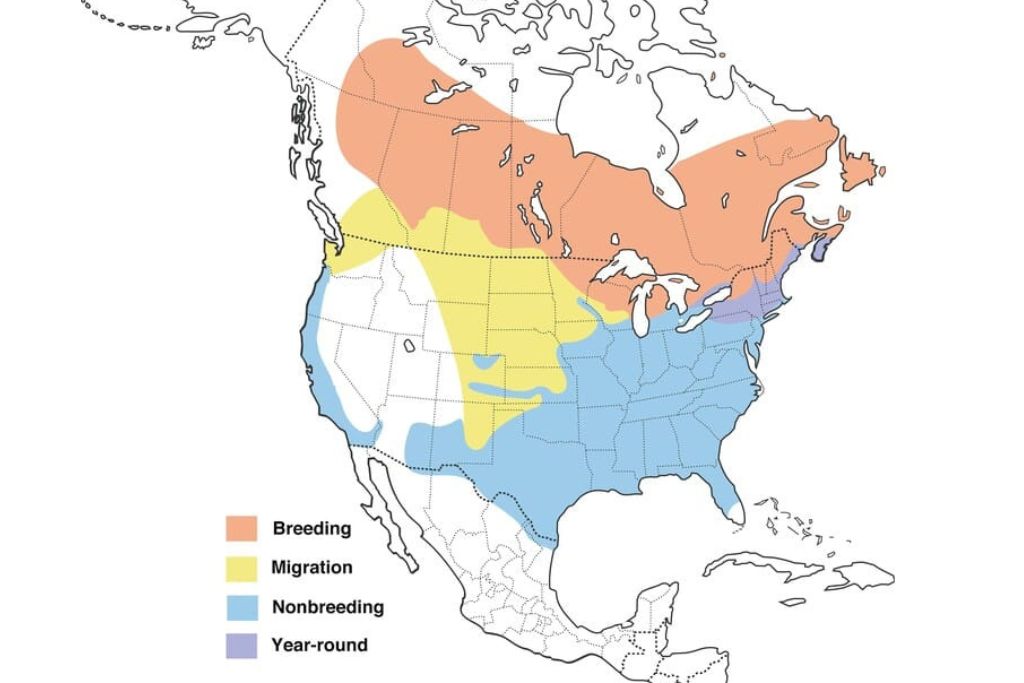
31. Song Sparrow
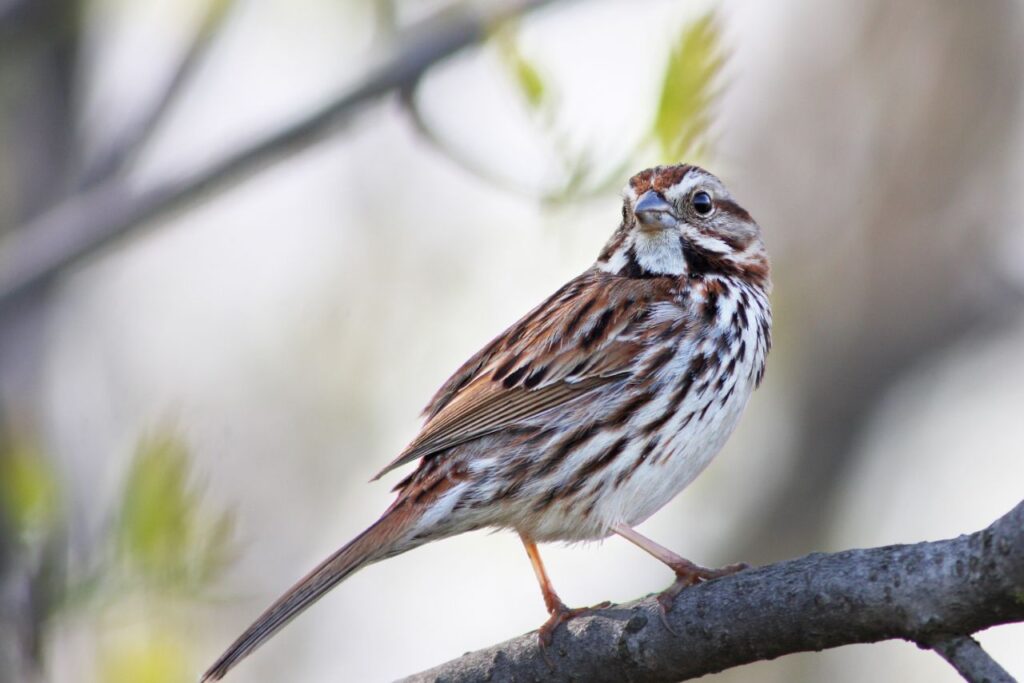
- Kingdom: Animalia
- Phylum: Chordata
- Class: Aves
- Order: Passeriformes
- Genus: Melospiza
- Species: M. melodia
The song sparrow (Melospiza melodia) is a common and delightful bird in Michigan. It is known for its melodious and distinctive song that fills the air during the spring and summer.
This tiny sparrow measures about 6 to 7 inches long and has a plump body with brown and gray feathers. Its chest is adorned with dark streaks that form a distinctive pattern, making it easy to identify.
Song sparrows live in woodlands, marshes, and suburbs. They build their nests close to the ground, usually hidden in shrubs or grasses. To protect their eggs and babies, they build nests with twigs, grasses, and other plant materials.
During the breeding season, the male engages in a fascinating behavior called “song flights.” They perch on high branches or other elevated spots, fluff their feathers, and sing their hearts out to attract mates. Males sing to establish territories and converse with other sparrows.
Interesting facts about song sparrows include their ability to mimic other birds, which they incorporate into their repertoire. They are also known to have a lifespan of up to 10 years in the wild. Birdwatchers of all ages enjoy seeing song sparrows in Michigan’s meadows, marshes, and backyard gardens.
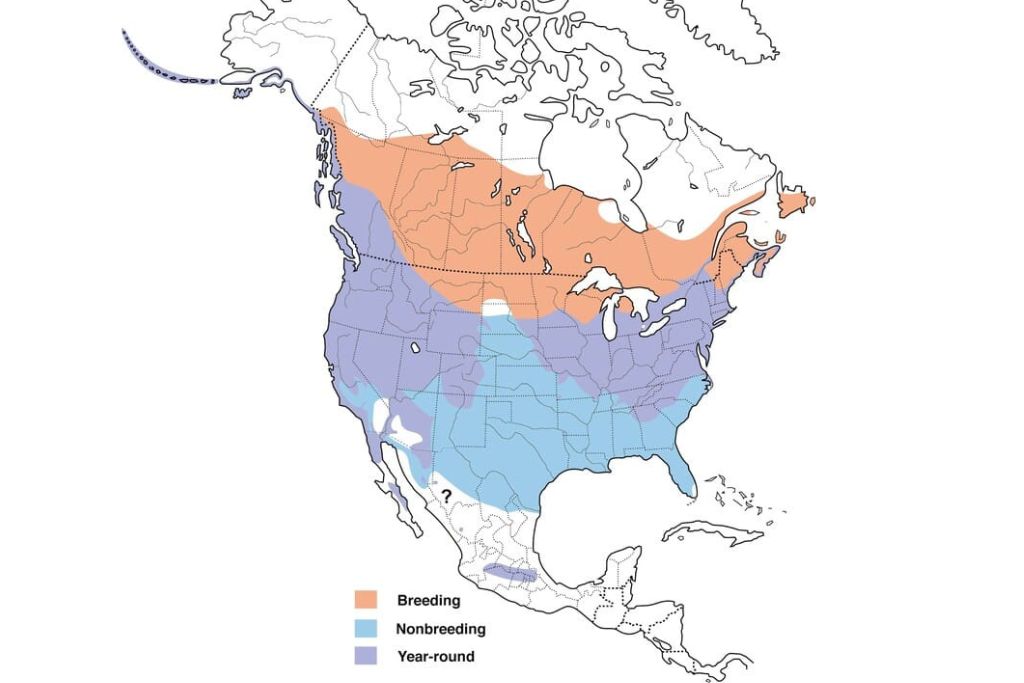
32. Wilson’s Phalarope
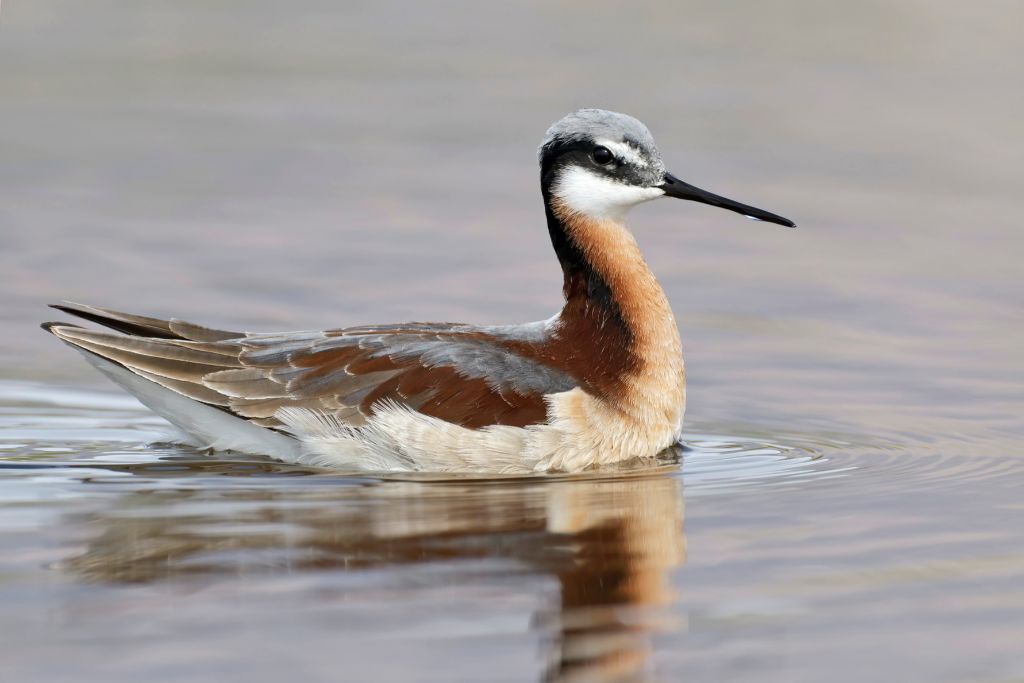
- Kingdom: Animalia
- Phylum: Chordata
- Class: Aves
- Order: Charadriiformes
- Genus: Phalaropus
- Species: P. tricolor
The Wilson’s phalarope (Phalaropus tricolor) is a unique and captivating bird in Michigan. Unlike many other bird species, the female Wilson’s phalarope is more colorful and larger than the males. They have a white belly, gray back, reddish neck, and head.
Wilson’s phalaropes have fascinating adaptations that allow them to thrive in wetland habitats. They have long, thin bills perfect for capturing small invertebrates in the water. They often spin in circles, creating a whirlpool effect that brings food to the surface. This feeding behavior is known as “whirling.”
In terms of habitat, Wilson’s phalaropes prefer shallow wetlands, including marshes and ponds. They can also be found in flooded fields and salt pans during migration. These birds build their nests on the ground, using plant materials and grasses, close to the water’s edge. Females lead courtship, and both parents incubate the eggs.
An interesting fact about Wilson’s phalaropes is that they have a reversed role in parental care. After hatching, the male raises the chicks while the female leaves. This unique behavior is relatively rare among bird species.
Wilson’s phalaropes are mostly seen during migration in Michigan’s western and northern wetland settings. Their vibrant colors and distinct behaviors make them a captivating sight for bird enthusiasts.
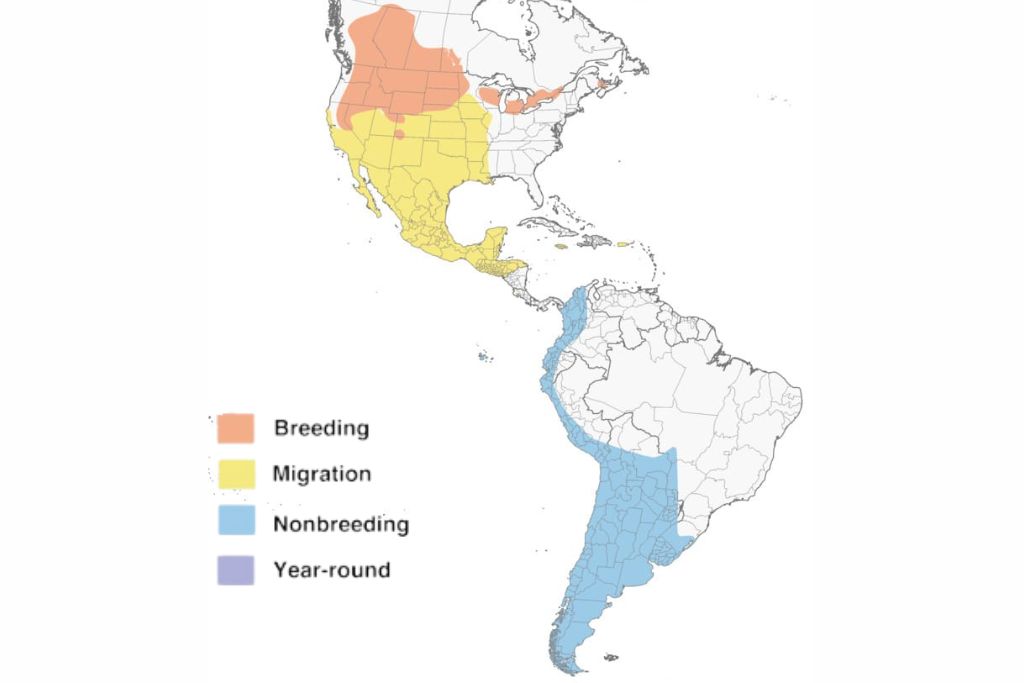
33. American Black Duck
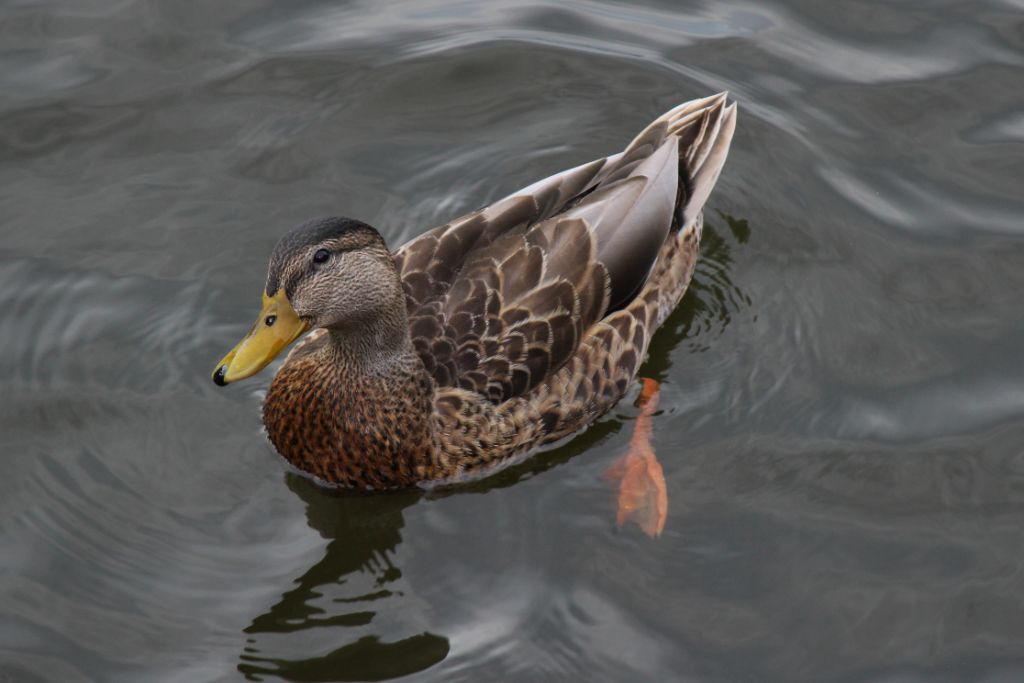
- Kingdom: Animalia
- Phylum: Chordata
- Class: Aves
- Order: Anseriformes
- Genus: Anas
- Species: A. rubripes
The American black duck (Anas rubripes) is a handsome and adaptable waterfowl species that can be found in Michigan. These ducks have dark plumage that looks black but is actually a blend of dark brown and dusky gray feathers. They have a moderate size, measuring around 20 to 24 inches in length.
The native habitats of American black ducks are coastal and estuarine wetlands, as well as freshwater marshes. They are adaptable to marine and freshwater habitats. These ducks have a unique ability to interbreed with other closely related duck species, resulting in hybrid offspring.
The preferred nesting habitat of American black ducks is a thick, overgrown area near water. The females lay an average of 8 to 10 eggs, which they incubate for about a month until they hatch. The female takes the ducklings to the nearest water source to swim and forage.
American black ducks can live up to 20 years in the wild, showcasing their longevity. These ducks are typically seen in Michigan’s Great Lakes shoreline, interior lakes, and rivers. Their remarkable appearance and adaptability to varied water habitats make them fascinating to see and appreciate.
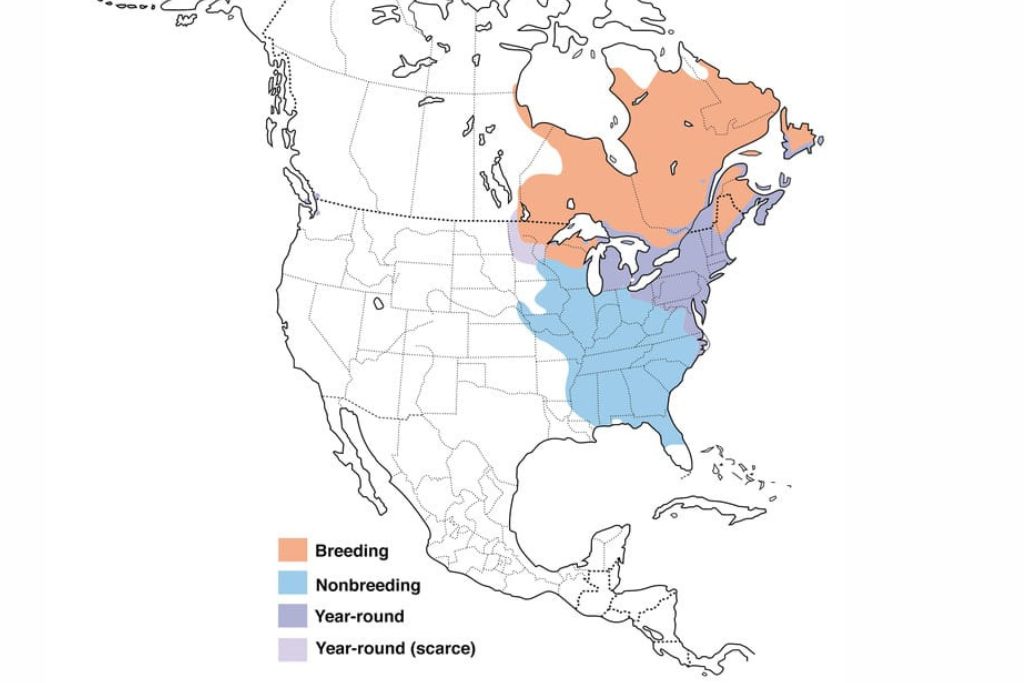
34. Nashville Warbler

- Kingdom: Animalia
- Phylum: Chordata
- Class: Aves
- Order: Passeriformes
- Genus: Leiothlypis
- Species: L. ruficapilla
Michigan is home to the attractive and vibrant Nashville warbler (Leiothlypis ruficapilla). It is named after the species first identified in Nashville, Tennessee. This 4.5-inch warbler has an olive-green back, gray head, and yellow body.
Nashville warblers inhabit deciduous forests, mixed woodlands, and shrublands. They prefer habitats with dense vegetation, particularly those containing a variety of trees and shrubs. These birds forage acrobatically for insects and spiders in leaves and trees.
They build their cup-shaped nests near the ground, frequently hidden in dense shrubs or low foliage. The female lays a clutch of 4 to 5 eggs, which she incubates for about 2 weeks. After hatching, both parents feed and care for the chicks until they fledge.
These birds migrate annually from North America to Central America and Northern South America. They are skilled navigators and rely on their innate sense of direction to navigate vast distances.
In Michigan, Nashville warblers are commonly spotted during the spring and fall migrations. Their bright yellow plumage brightens the trees and plants as they fly around. Their energetic behavior and distinctive appearance make them a favorite among birdwatchers in the state.
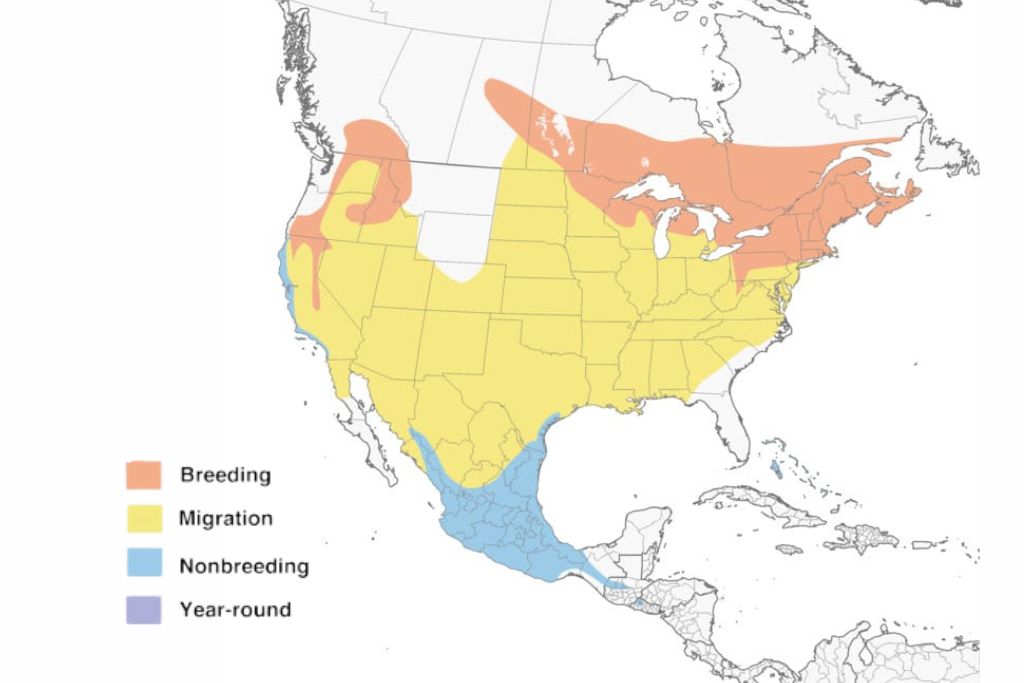
35. Rough-Legged Hawk
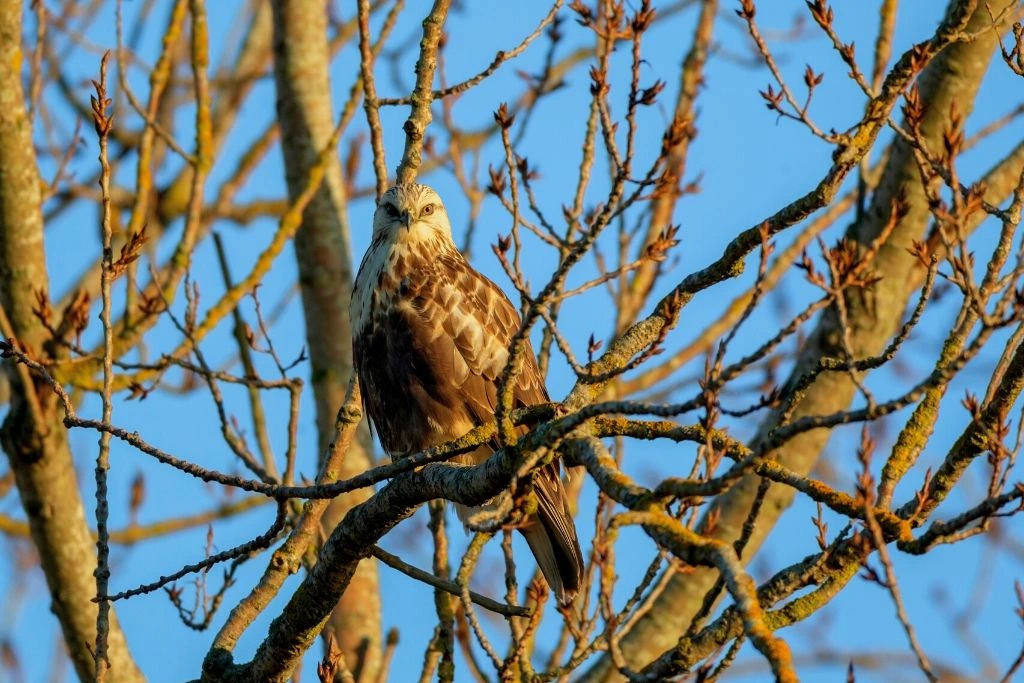
- Kingdom: Animalia
- Phylum: Chordata
- Class: Aves
- Order: Accipitriformes
- Genus: Buteo
- Species: B. lagopus
The rough-legged hawk (Buteo lagopus) is a majestic raptor found in Michigan during winter. These birds of prey are known for their impressive wingspan, measuring up to 4.5 feet. They have a distinct plumage with dark brown feathers on their back and a light-colored belly with dark streaks. Their feathering spreads to their talons, a feature rare in hawks.
Grasslands, wetlands, and farmland are some places you might find a rough-legged hawk. During the winter, they migrate from their Arctic breeding grounds to more temperate regions, including Michigan. By sprouting feathers on their legs, these hawks can survive cold conditions.
Regarding nesting and breeding behaviors, they build large stick nests on cliffs, trees, or ground. The females lay a clutch of 3 to 5 eggs, which they incubate for about a month. Both parents participate in incubation and the subsequent care of the chicks, ensuring their survival and development.
Interesting facts about rough-legged hawks include their hunting style. They linger mid-air to watch their prey before swooping to catch it. They primarily feed on small mammals, such as mice and voles, which are abundant in their preferred habitats.
In Michigan, rough-legged hawks are usually spotted in open areas, including the rural parts of the state. They can often be seen perched on telephone poles or soaring through the sky, their broad wings outstretched. Birdwatchers, especially in winter, are captivated by their royal appearance and distinctive hunting methods.
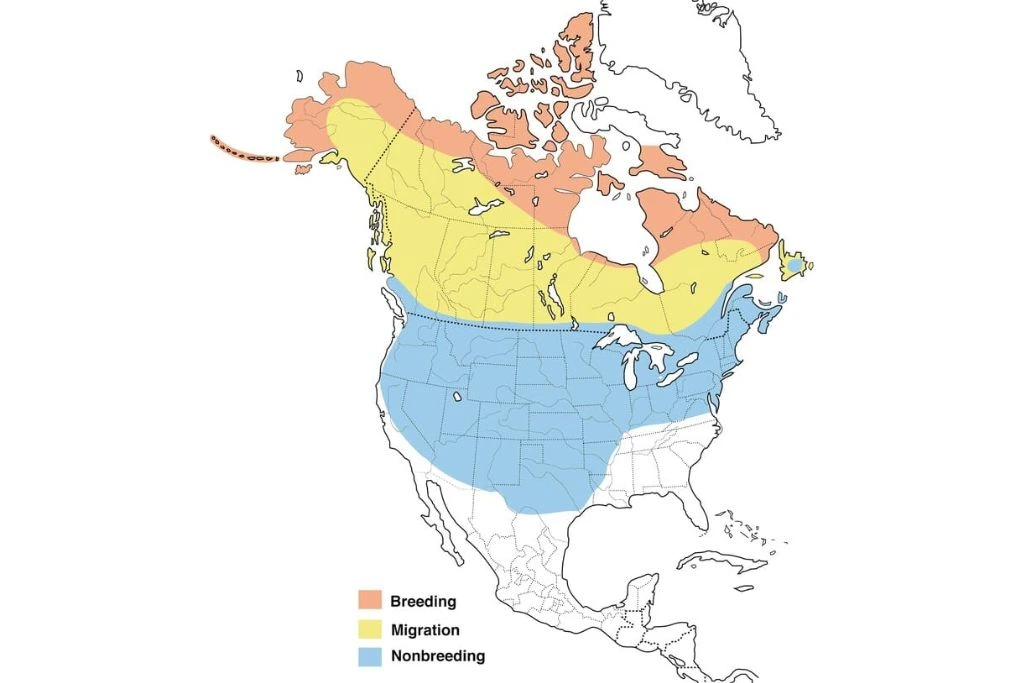
36. Neotropic Cormorant
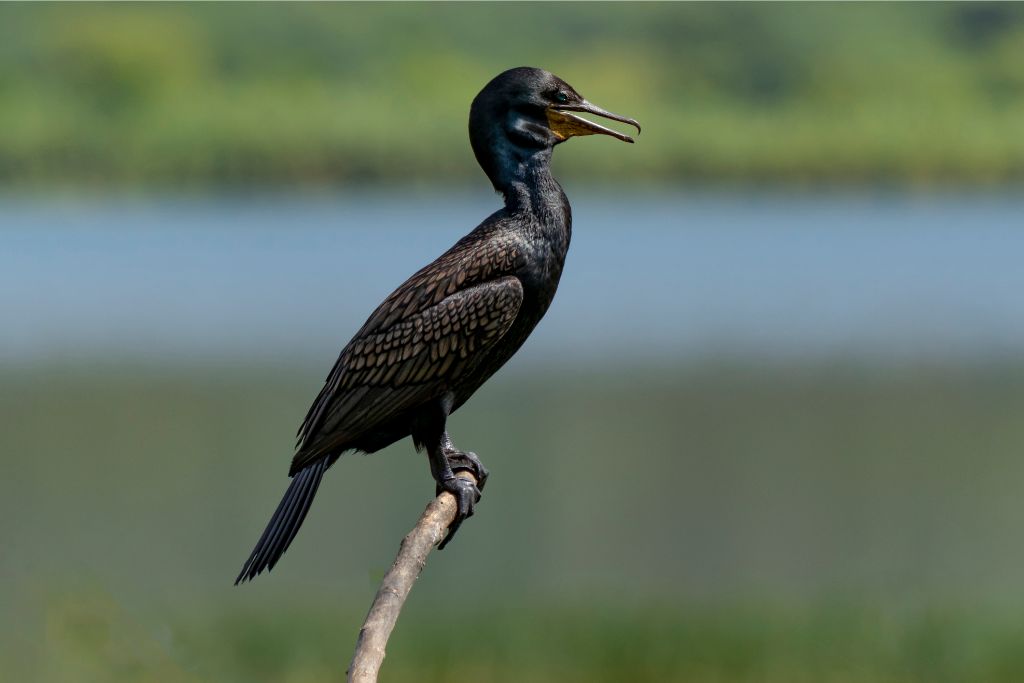
- Kingdom: Animalia
- Phylum: Chordata
- Class: Aves
- Order: Suliformes
- Genus: Nannopterum
- Species: N. brasilianum
Neotropic cormorants (Nannopterum brasilianum) are fascinating birds commonly found in Michigan. They have distinctive characteristics that make them stand out among other avian species.
They have a distinct appearance with a sleek black body and a long, slender neck. Their sharp beak is perfectly adapted for catching fish, their primary food source. The webbed feet of a neotropical cormorant are an asset while swimming swiftly in pursuit of prey.
These versatile birds live in lakes, rivers, and coasts. They prefer areas with abundant fish, such as freshwater lakes and marshes. After a dive for fish, neotropic cormorants will dry their wings in the sun on nearby rocks or branches. They nest in trees or on rocky ledges near water for convenient access to food.
During the breeding season, neotropic cormorants display attractive nesting and breeding behaviors. Males establish territories and perform elaborate courtship displays to attract females. Once a pair is formed, they build a nest of twigs, grass, and other plant materials. The female typically lays 3 to 4 eggs, which both parents take turns incubating. The parents feed their offspring regurgitated fish until they can fly.
In search of prey, neotropic cormorants may dive deep. They can swim for several minutes using their muscular wings. They have an average life expectancy of around 10 to 15 years. These birds live near the Great Lakes and other large bodies of water in Michigan, where they may find plenty of fish.

37. White-Breasted Nuthatch
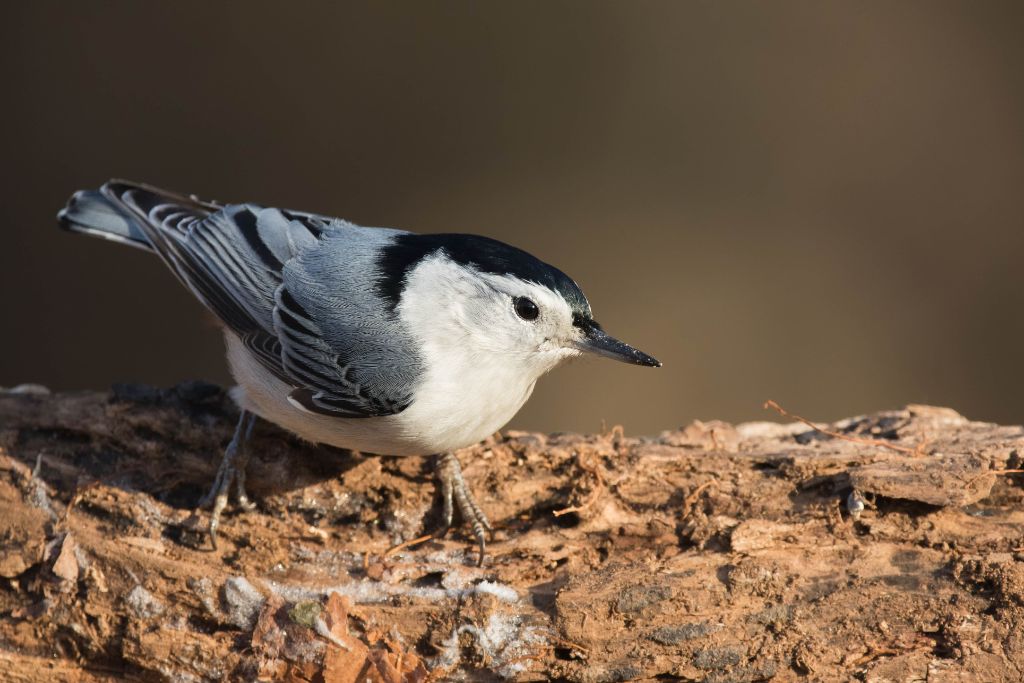
- Kingdom: Animalia
- Phylum: Chordata
- Class: Aves
- Order: Passeriformes
- Genus: Sitta
- Species: S. carolinensis
Another common bird in Michigan is the white-breasted nuthatch (Sitta carolinensis). These small, charismatic birds are easily recognizable with their striking black and white plumage. With a stocky body and short tails, they have a distinctive appearance.
Strong legs and keen claws allow the white-breasted nuthatch to climb down tree trunks headfirst. This adaptation allows them to search for insects and spiders in crevices and bark.
White-breasted nuthatches hunt for food in deciduous and mixed woodlands. They prefer mature trees that provide ample nesting opportunities and foraging grounds. Backyard feeders with suet or sunflower seeds attract these birds. Birdwatchers of all ages like them.
During nesting season, white-breasted nuthatches display interesting behaviors. They excavate cavities in tree trunks, creating their nests using bits of bark, twigs, and grass. These nests provide a safe and cozy environment for their eggs and young chicks.
The female lays a clutch of 5 to 9 eggs, and both parents take turns incubating them. The parents feed the chicks insects, spiders, and seeds until they fledge and become independent.
They have a unique habit of “hiding” seeds. They tuck seeds into tree bark crevices, using their bills to hammer the seeds into place. “Caching” permits them to store food for later consumption when food sources are scarce.
The life expectancy for white-breasted nuthatches is roughly 6 to 10 years. They’re common in Michigan’s forests and suburban neighborhoods with mature trees.
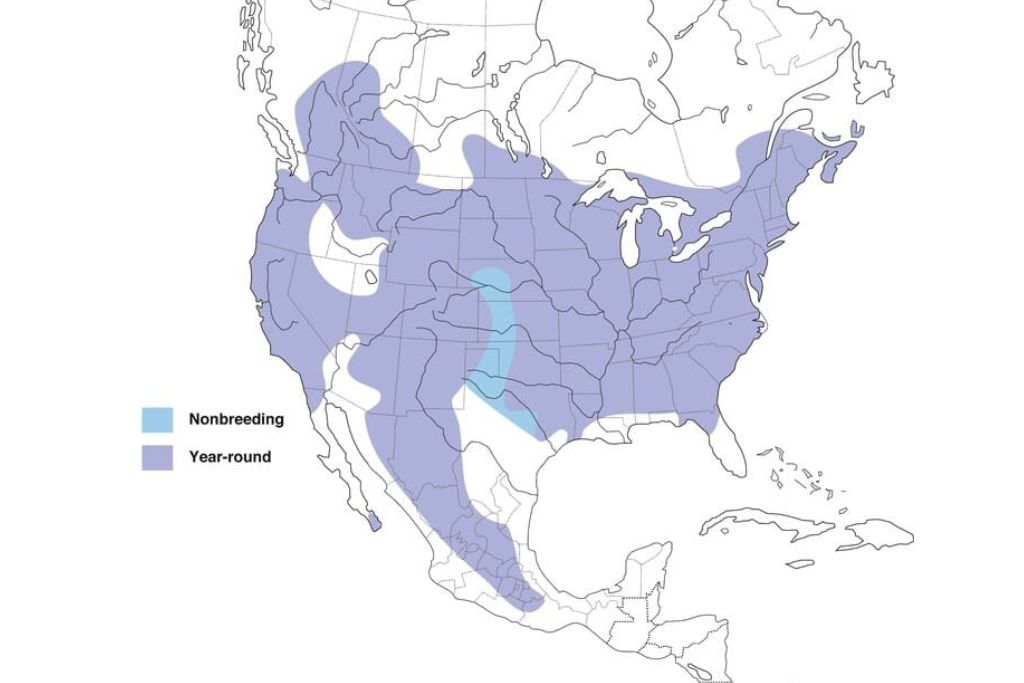
FAQs
What is the Smallest Bird in Michigan?
The smallest bird in Michigan is the ruby-throated hummingbird, measuring about 3.5 inches in length.
How Many Birds are Native to Michigan?
Michigan is home to over 400 species of birds, making it a diverse habitat for avian life.
What is the Largest Bird Native to Michigan?
The largest bird native to Michigan is the sandhill crane, standing approximately 4 feet tall with a wingspan of around 6 feet.
What is the Most Colorful Bird in Michigan?
The most colorful bird in Michigan is the male Baltimore oriole, with its vibrant orange and black plumage.

